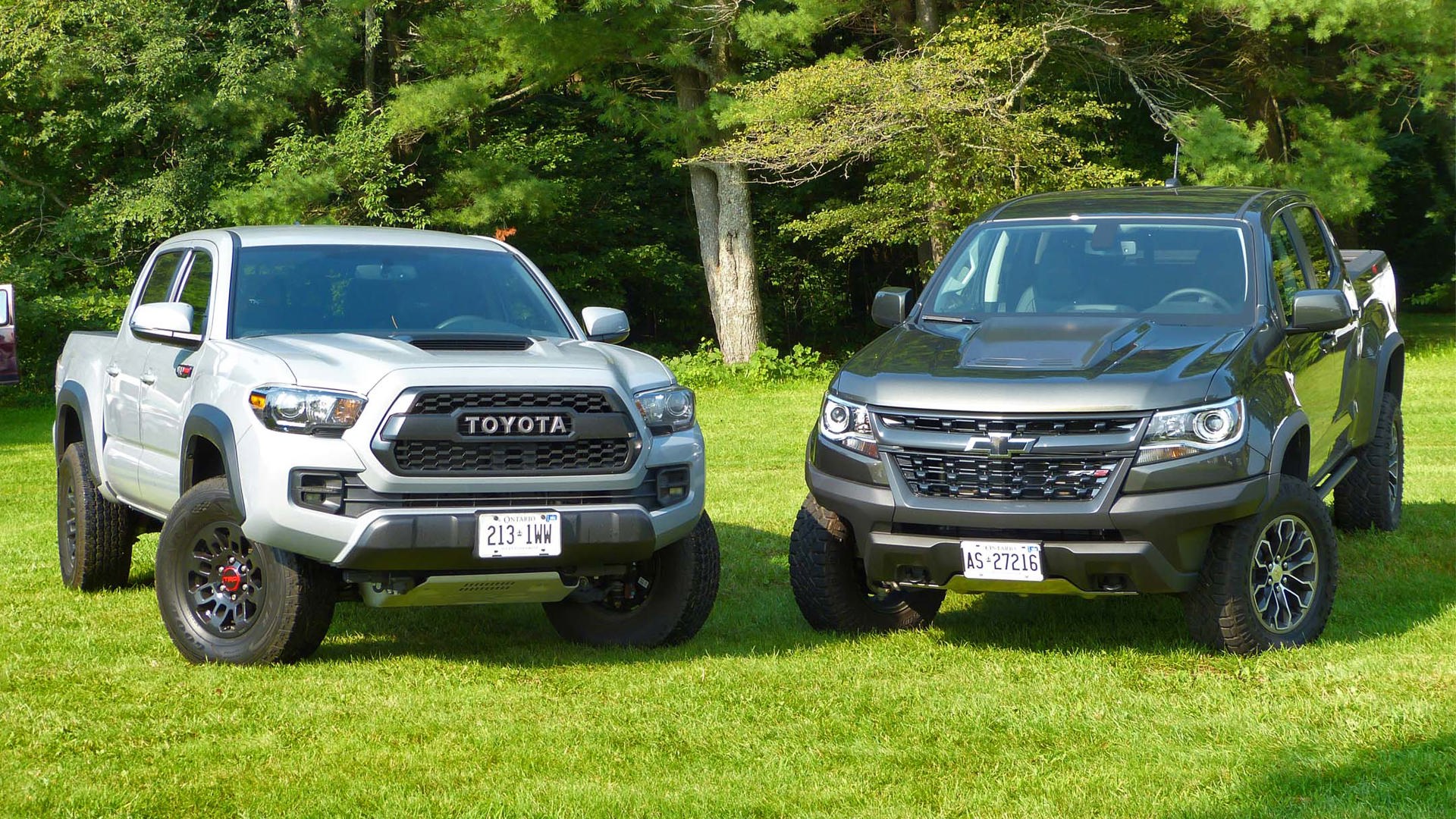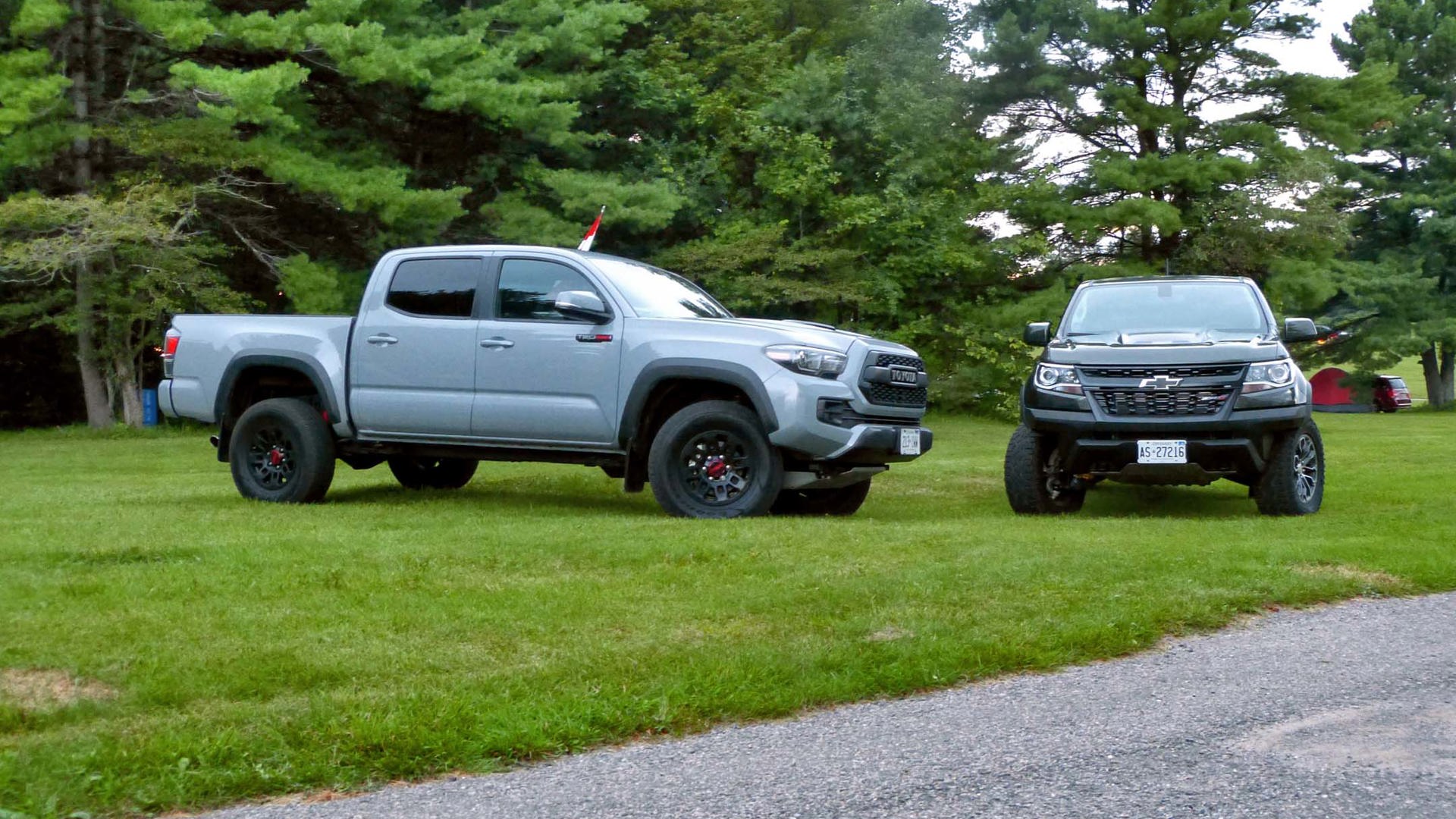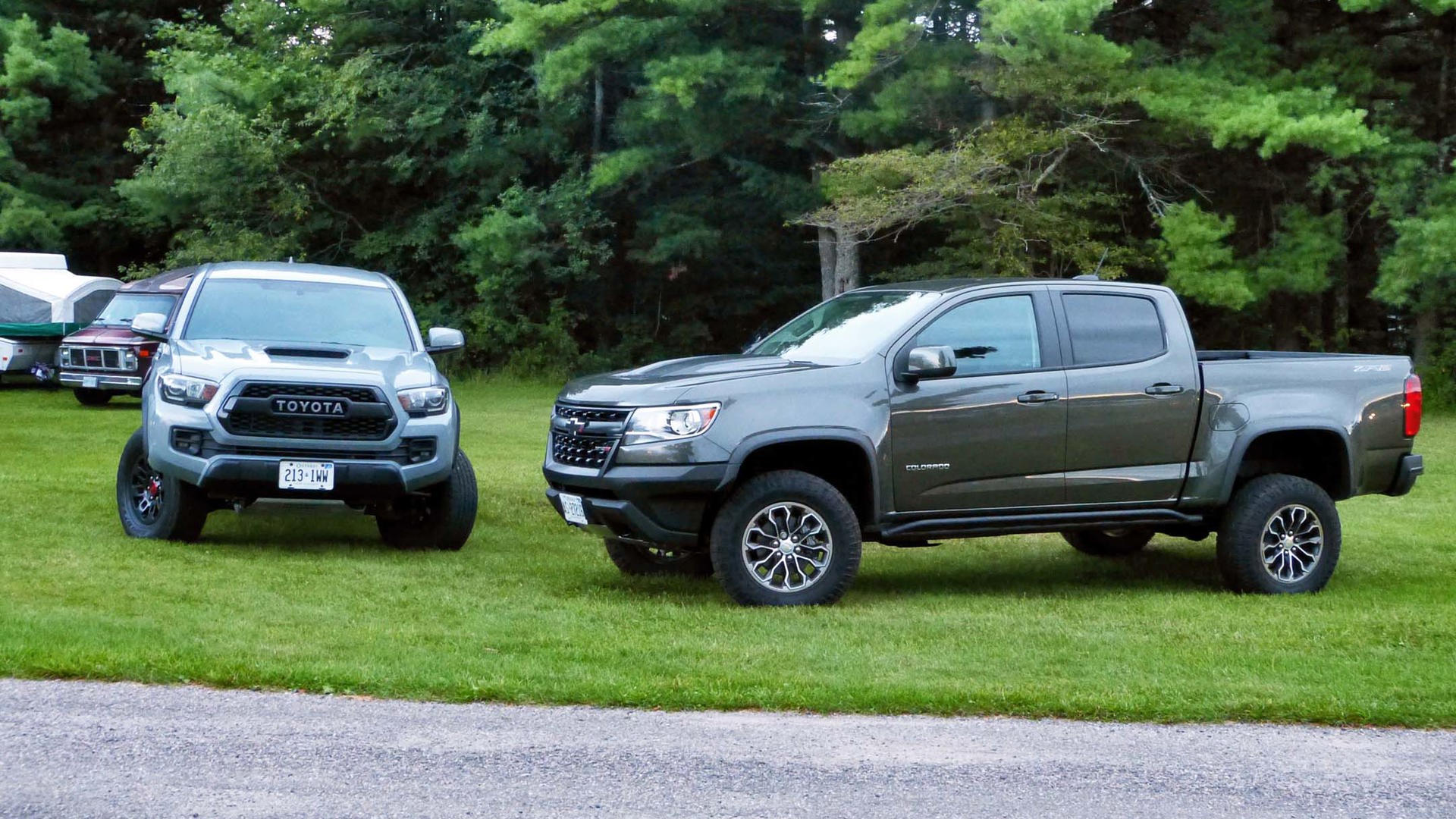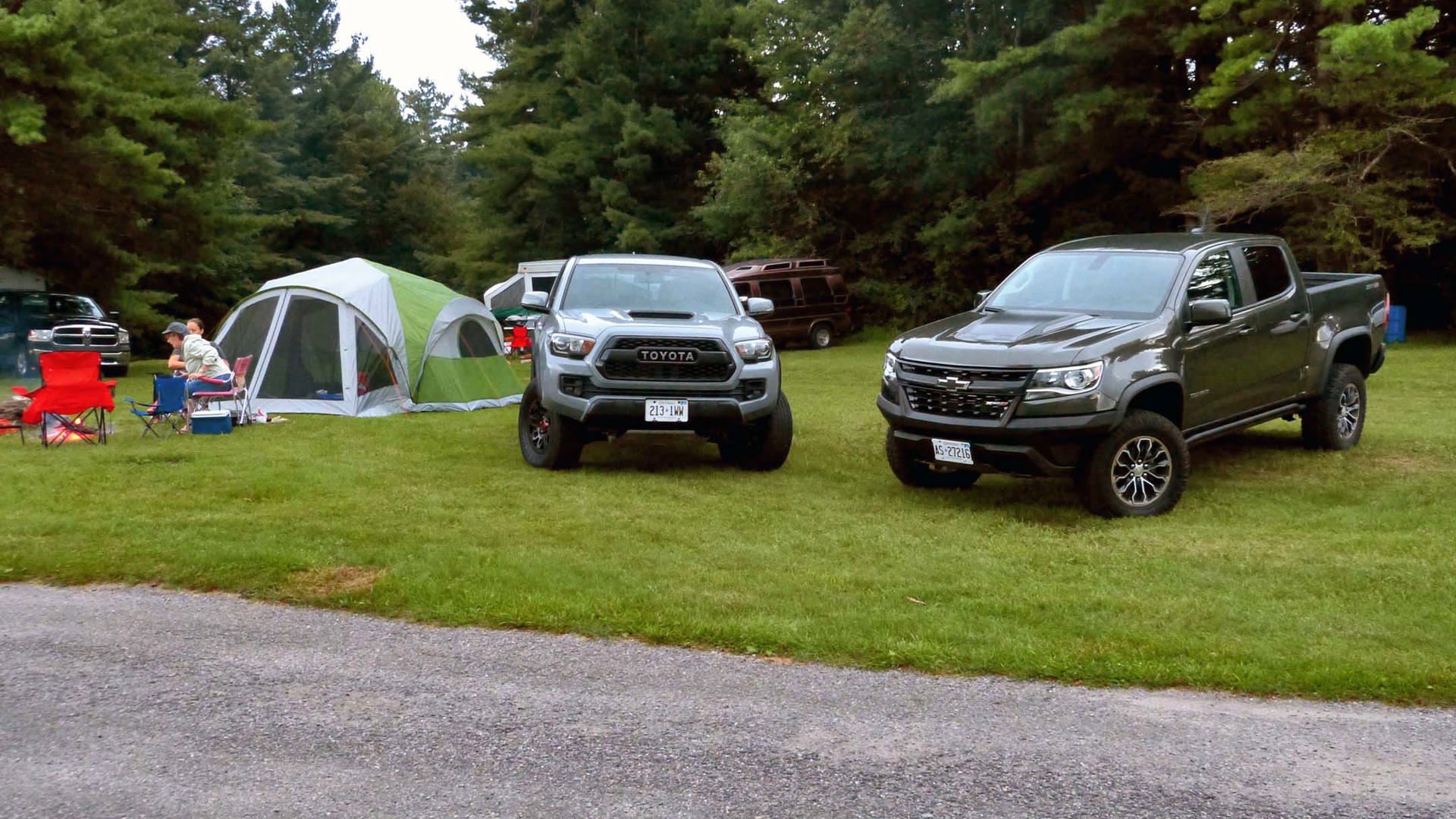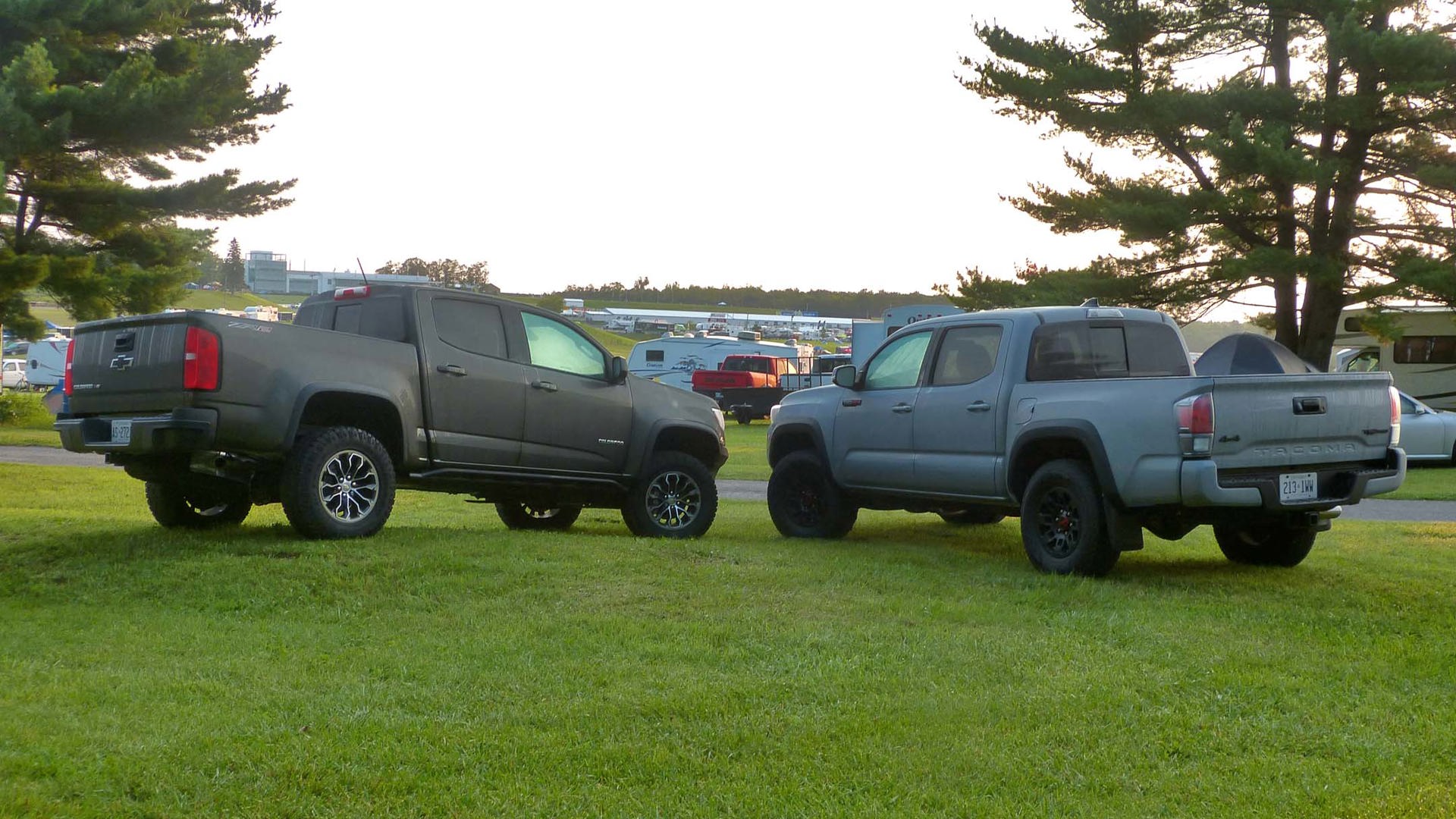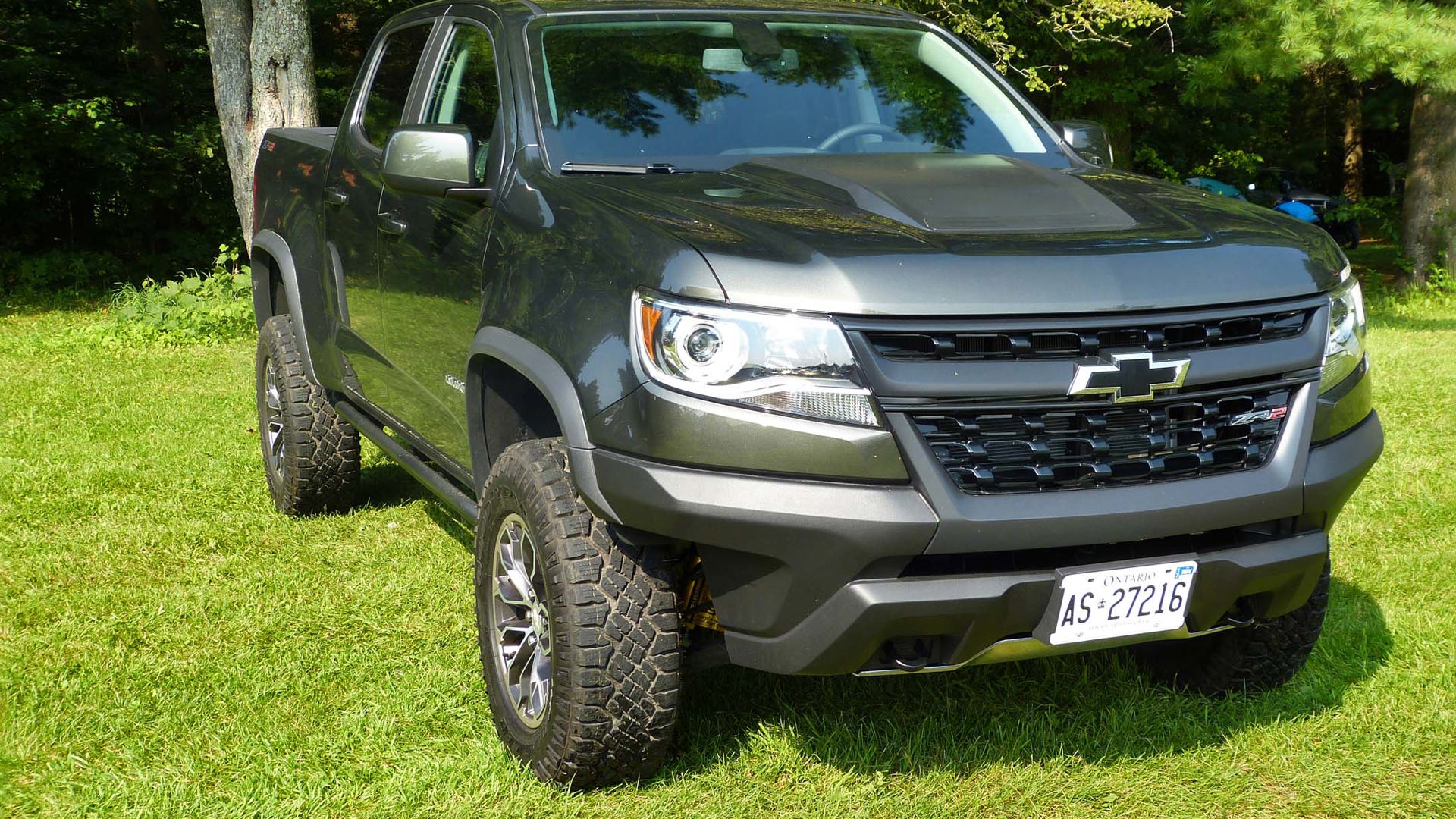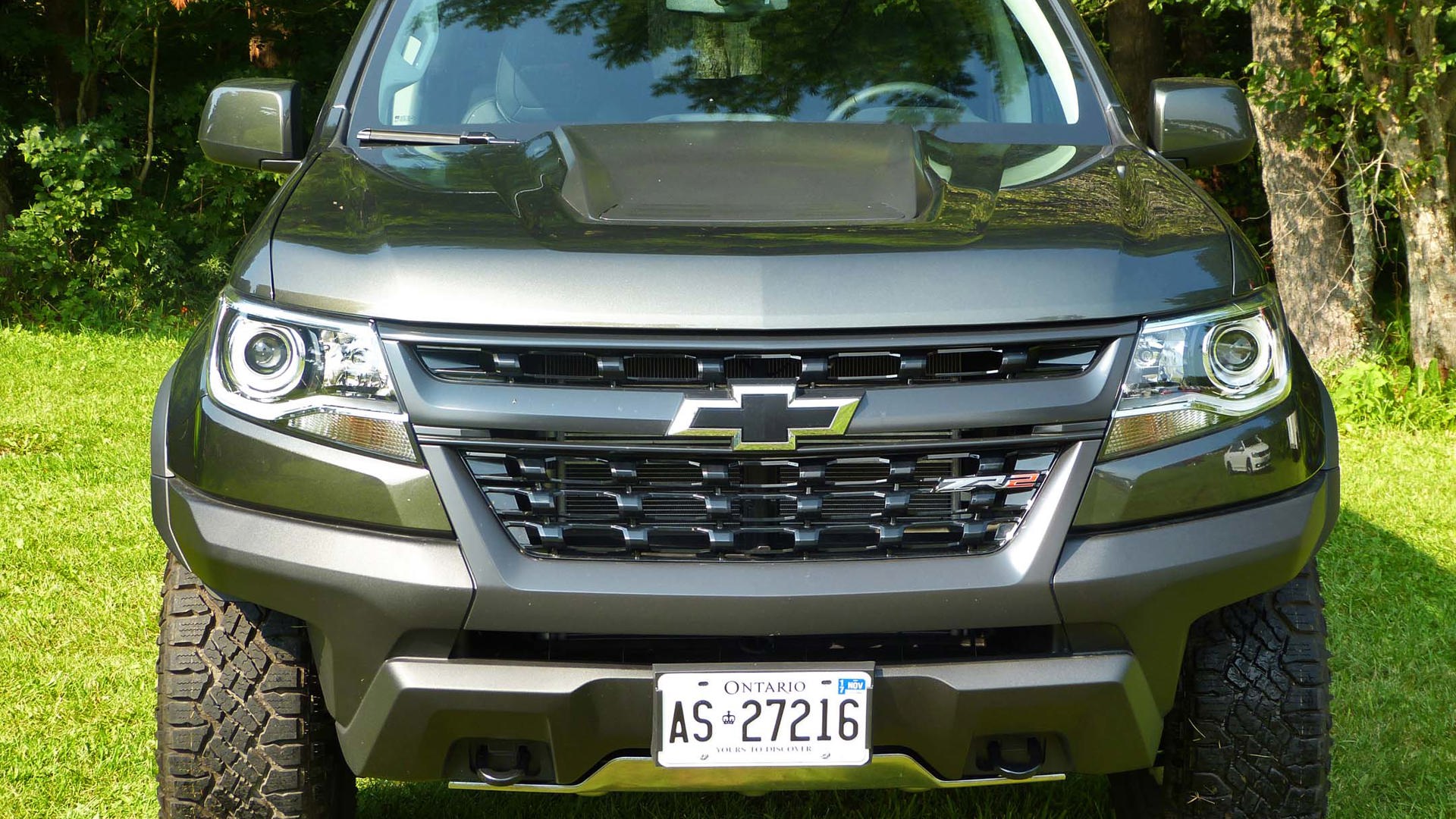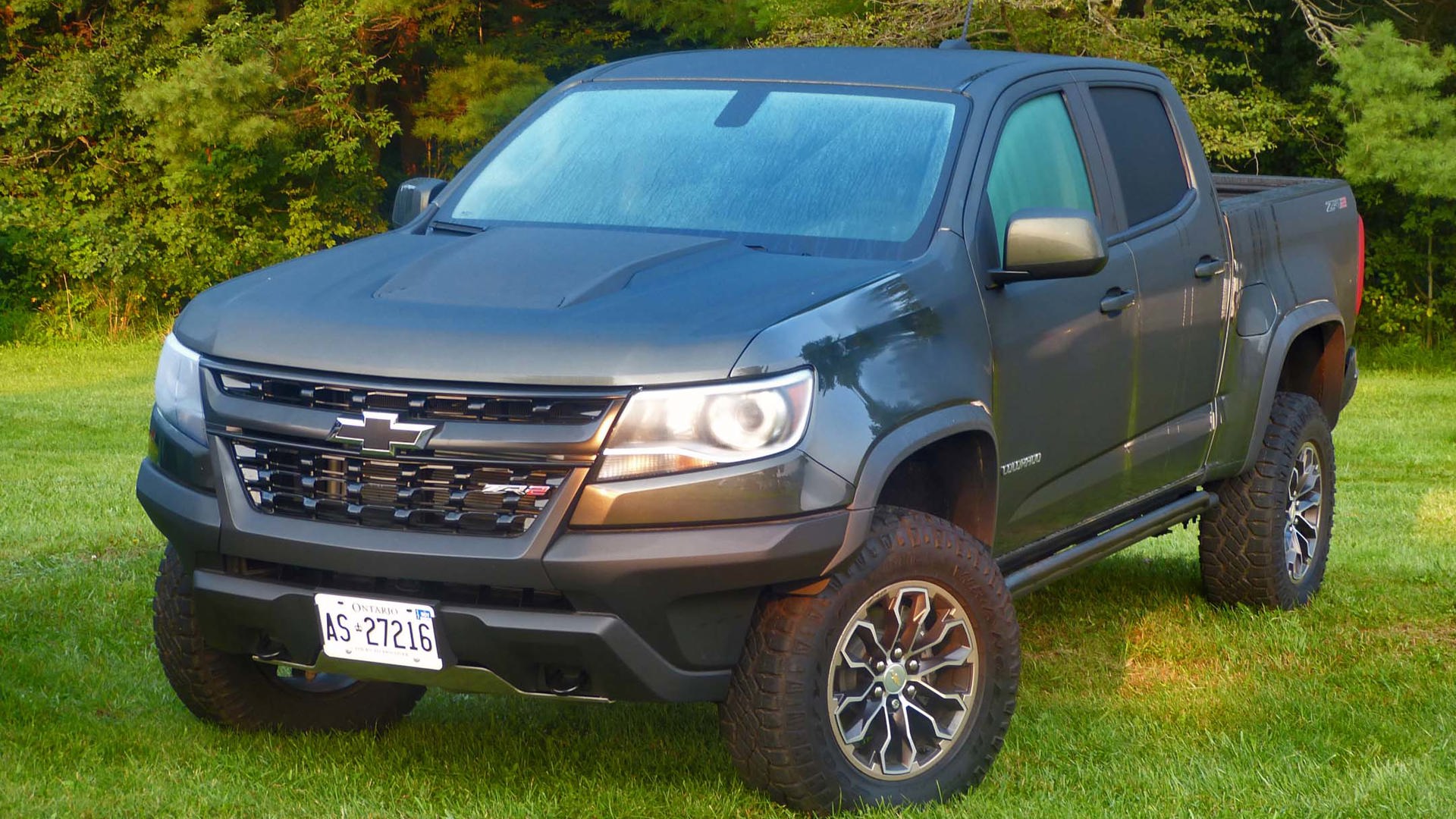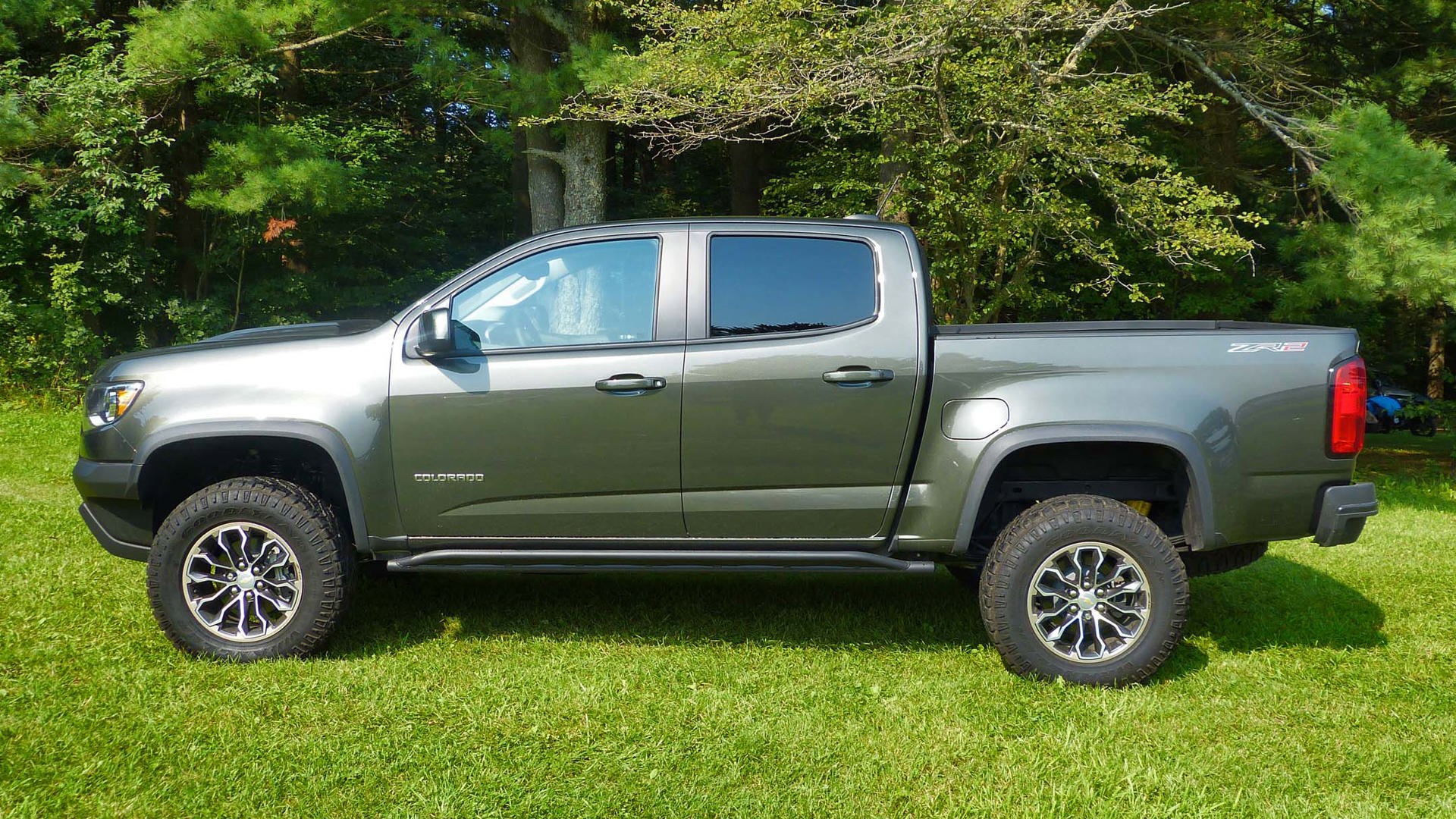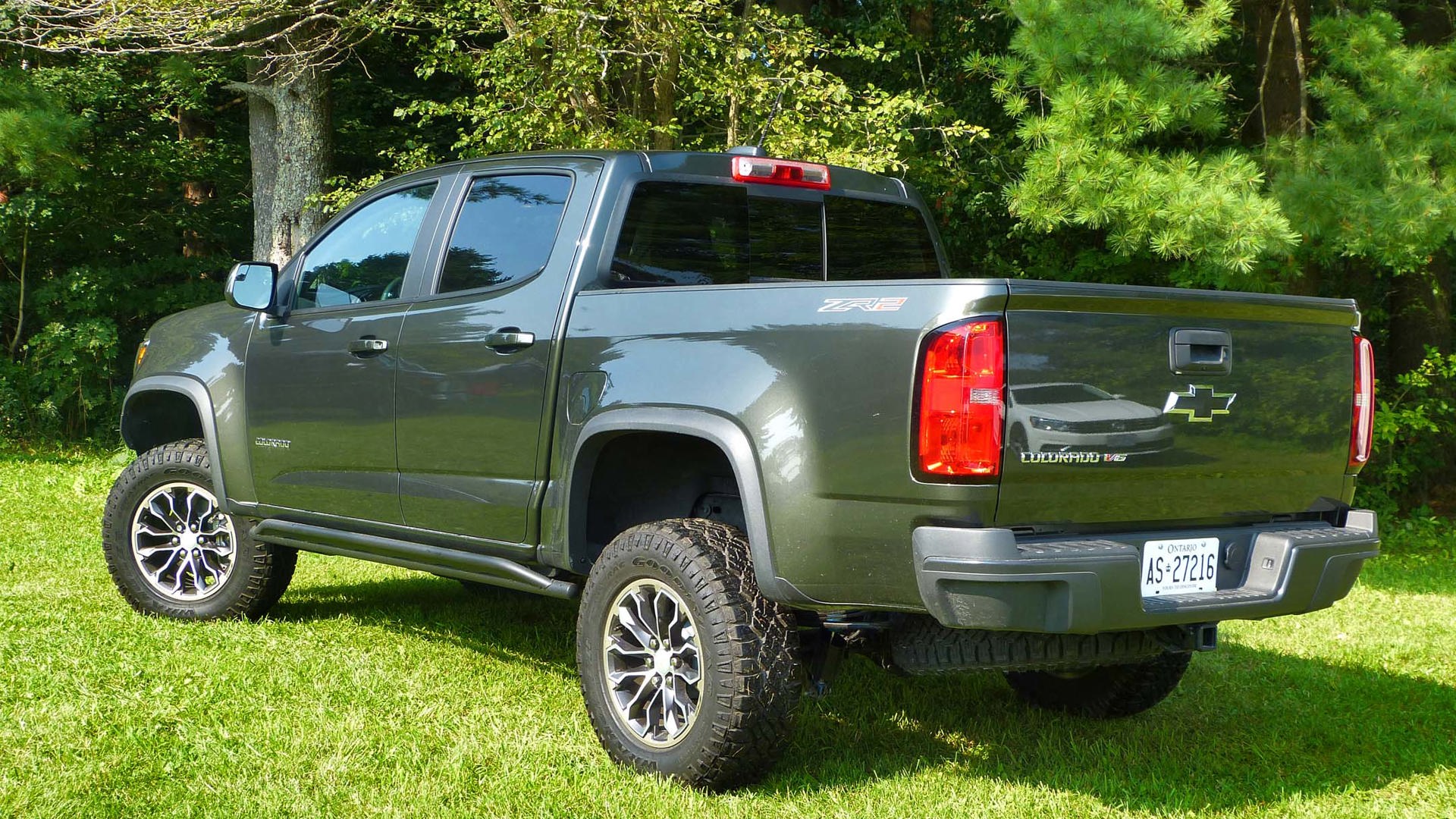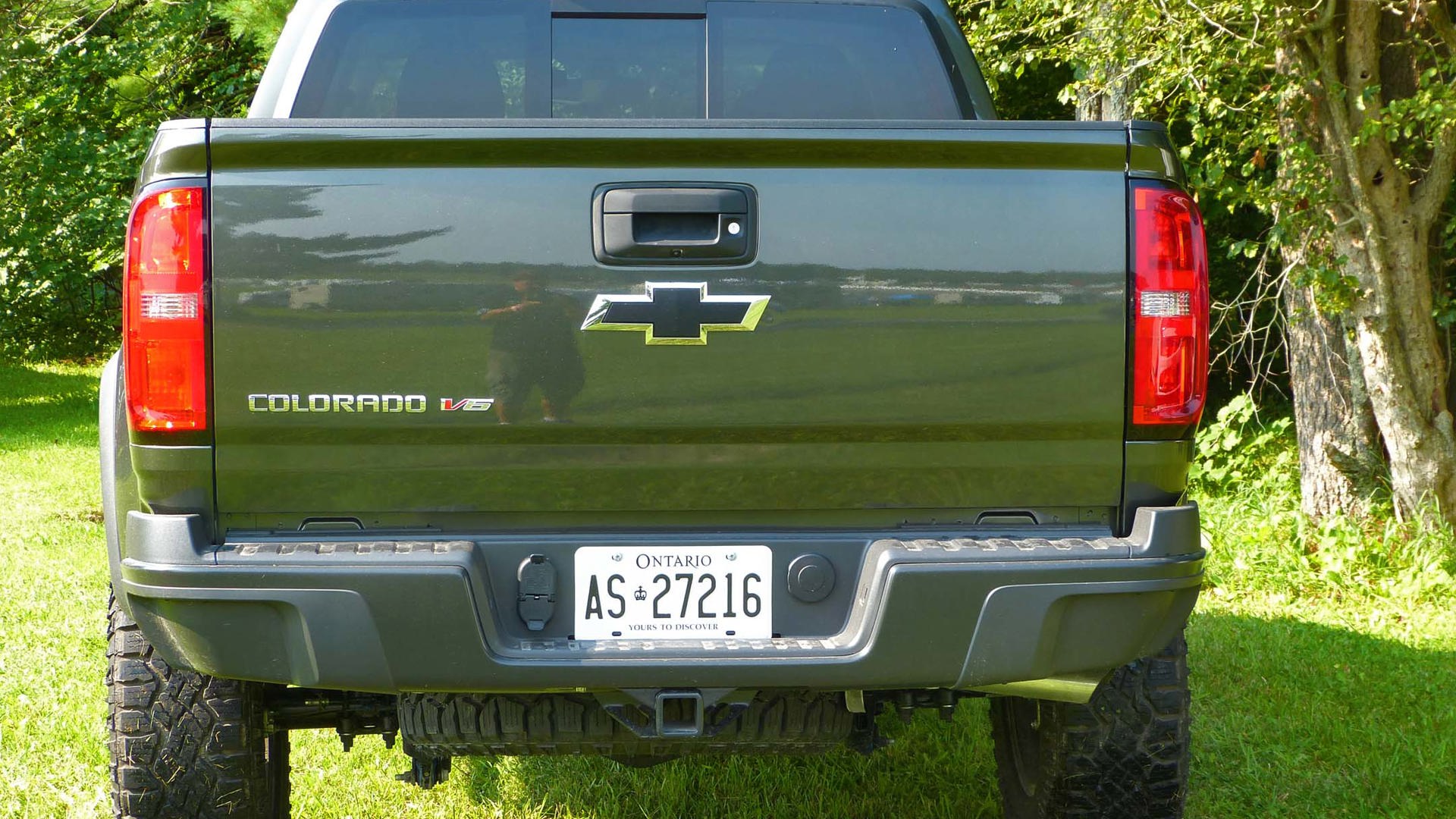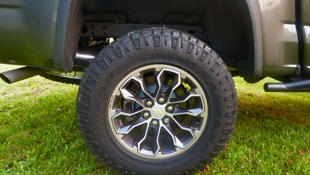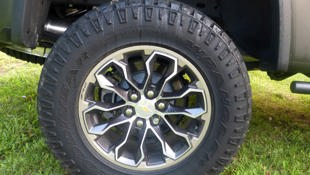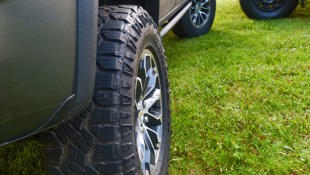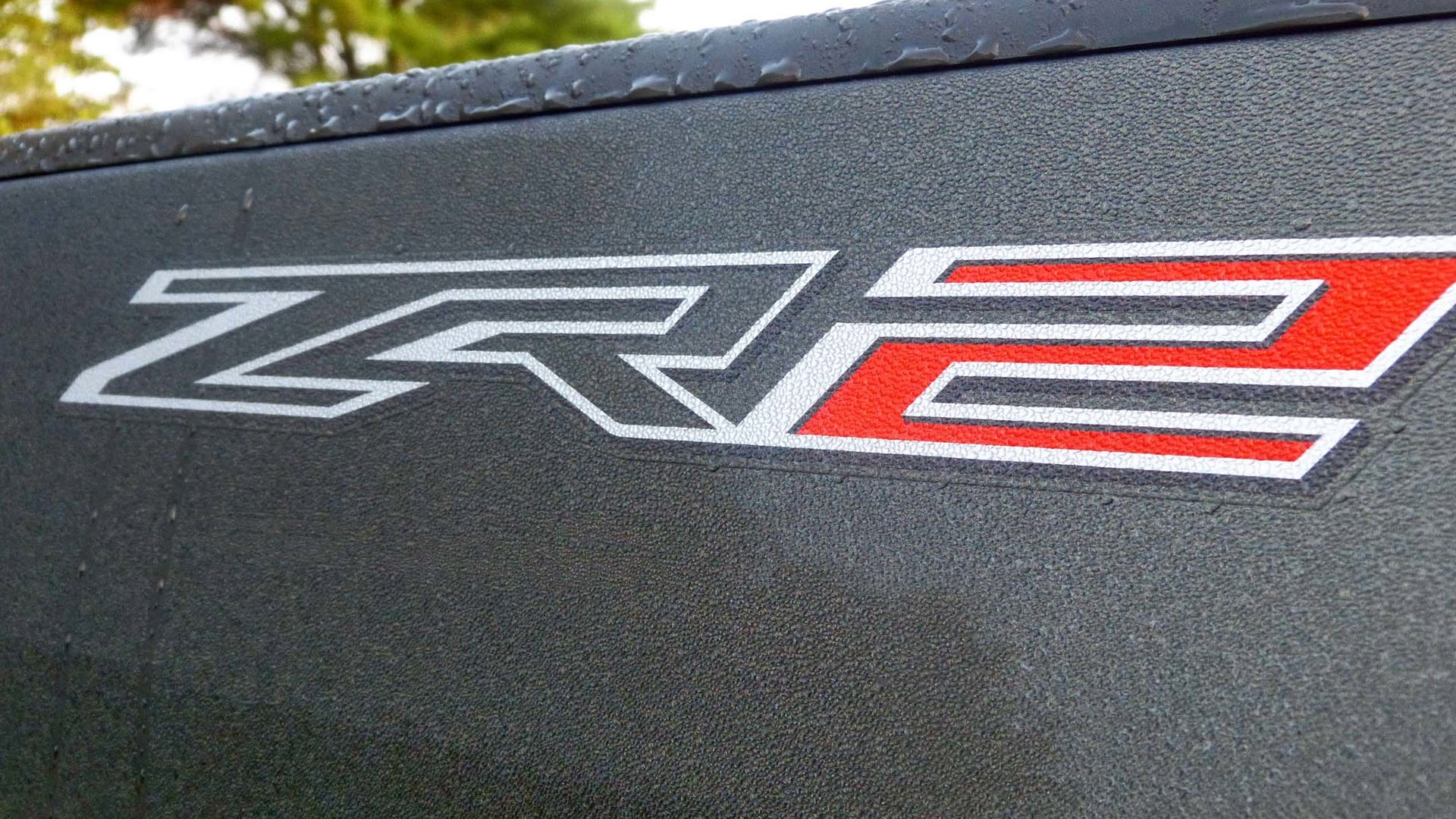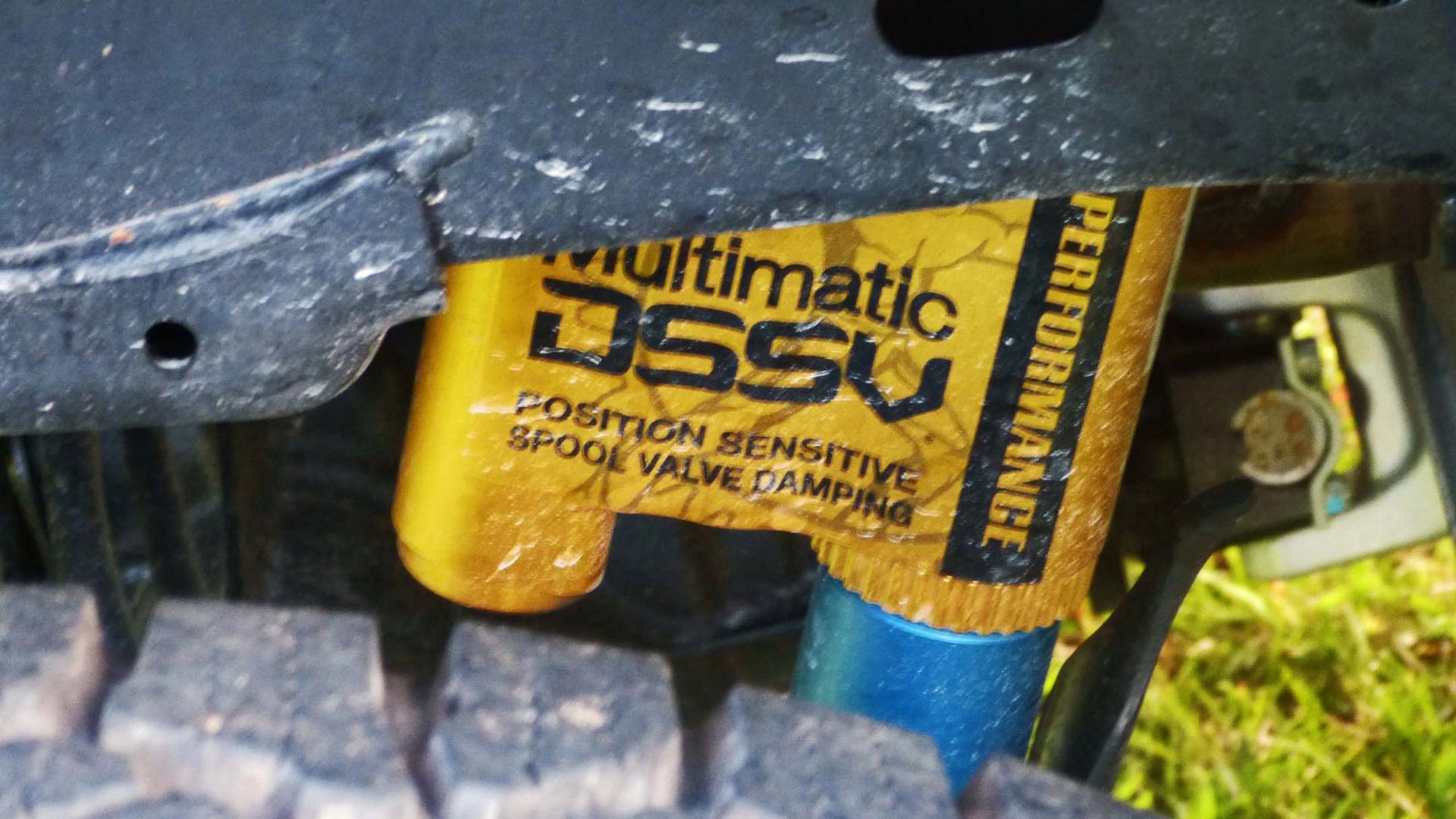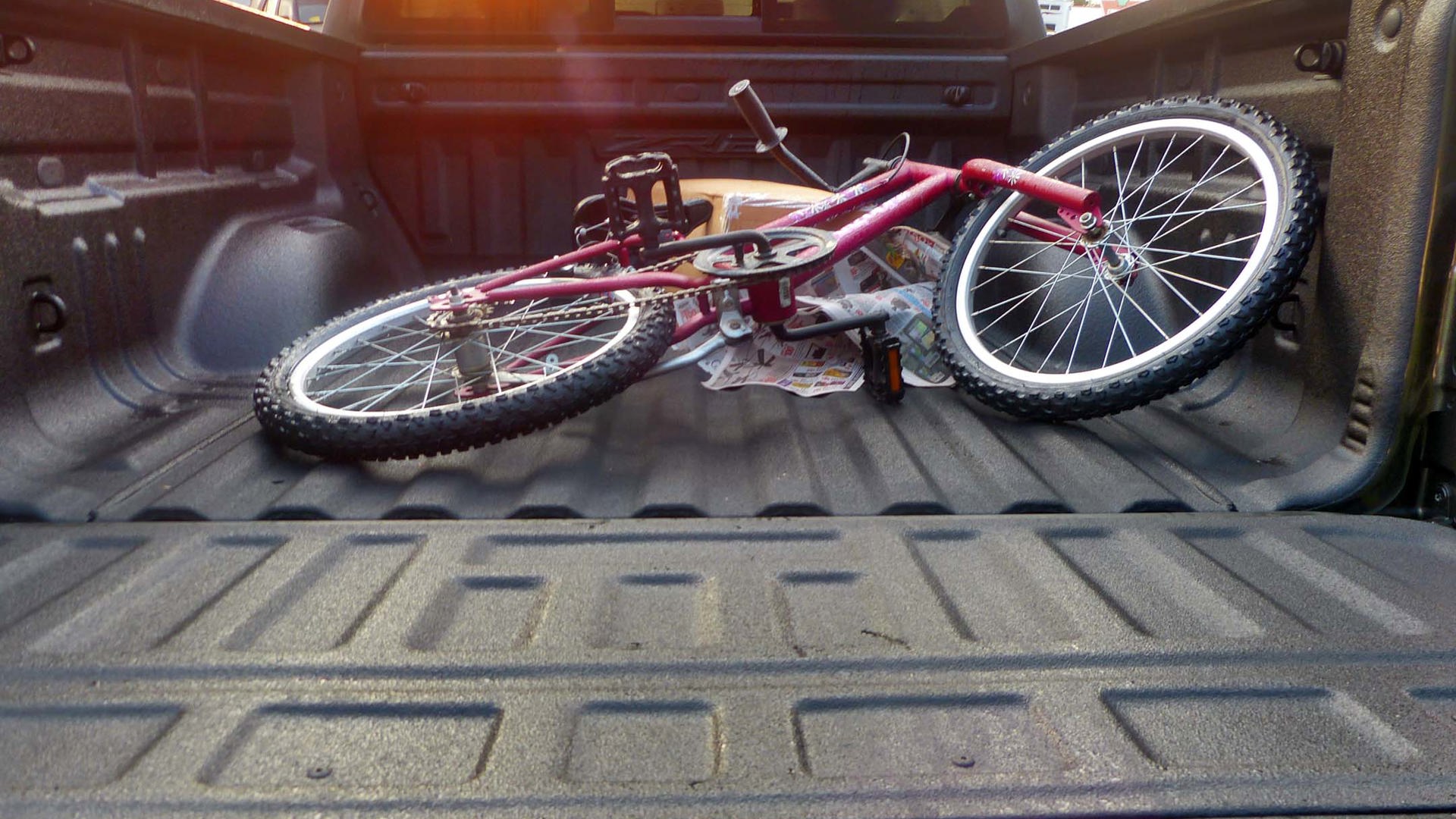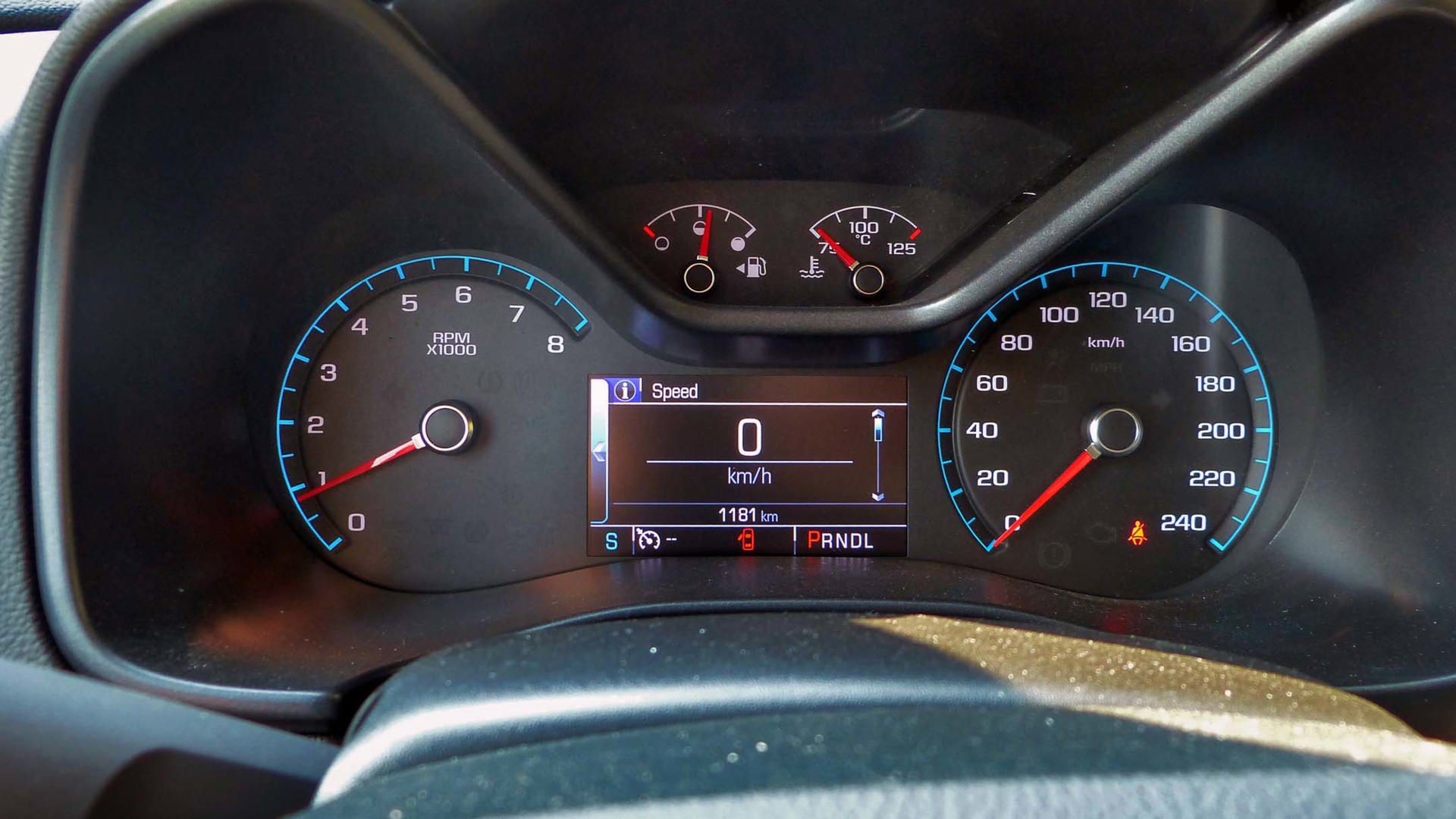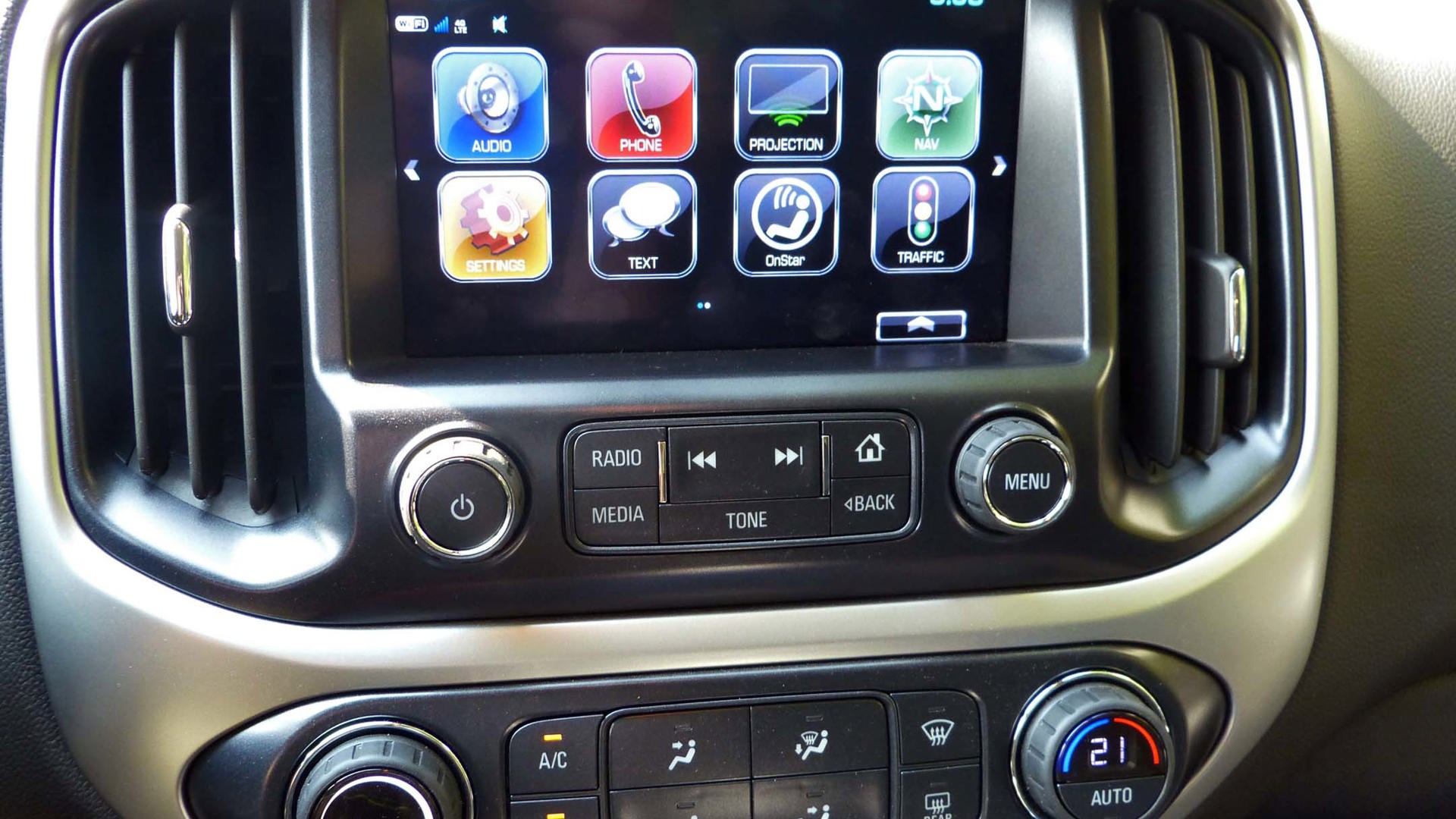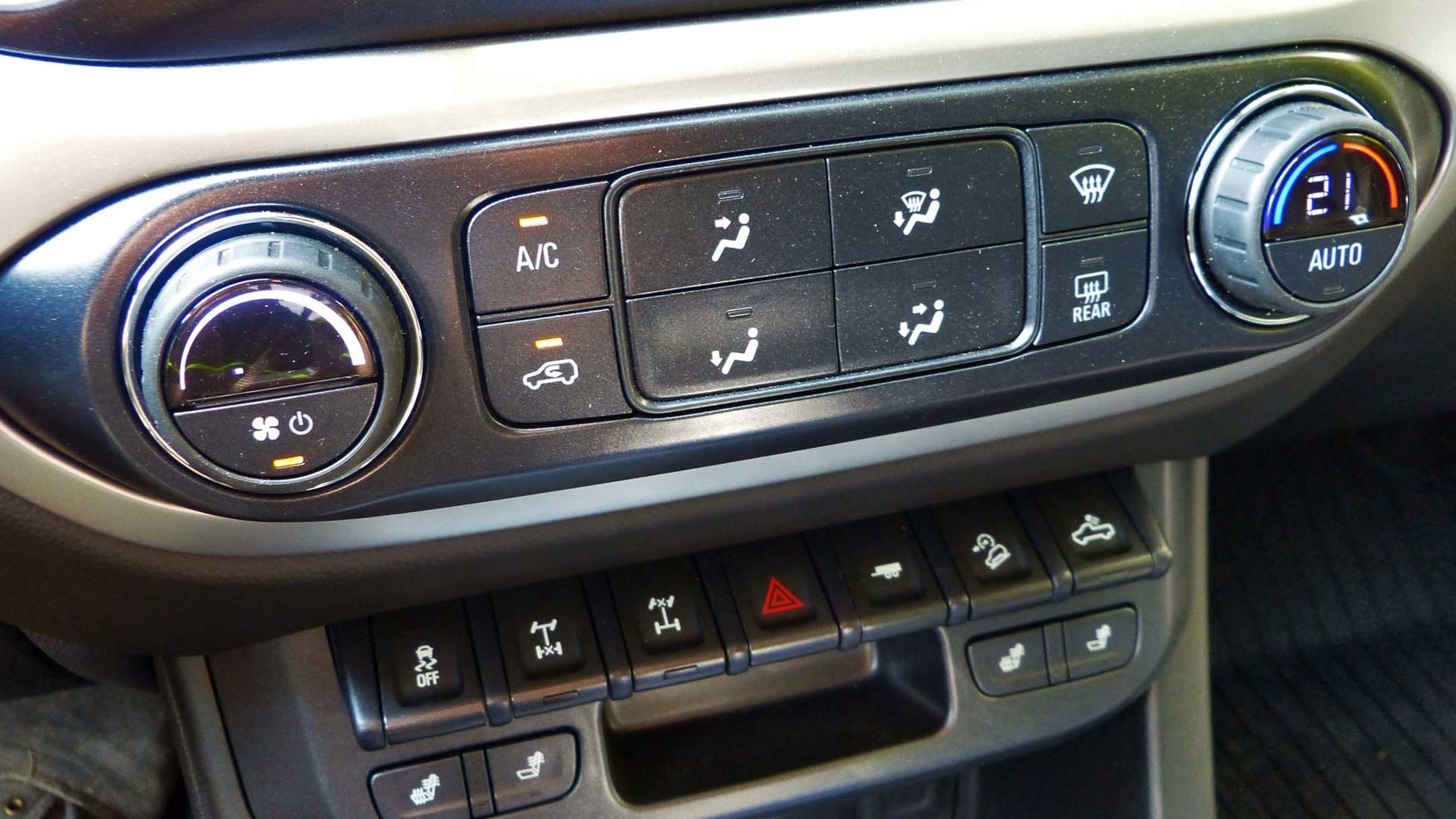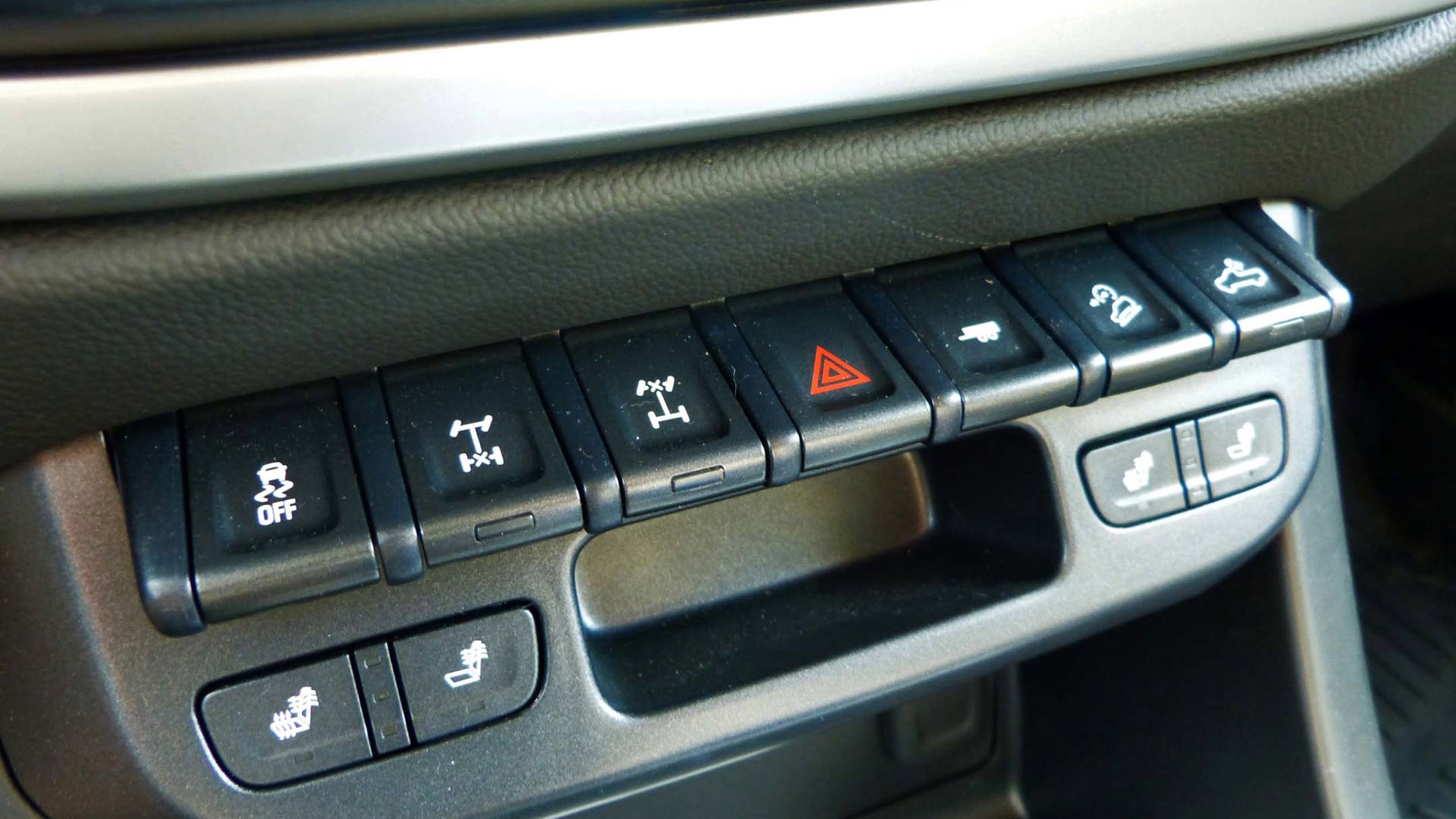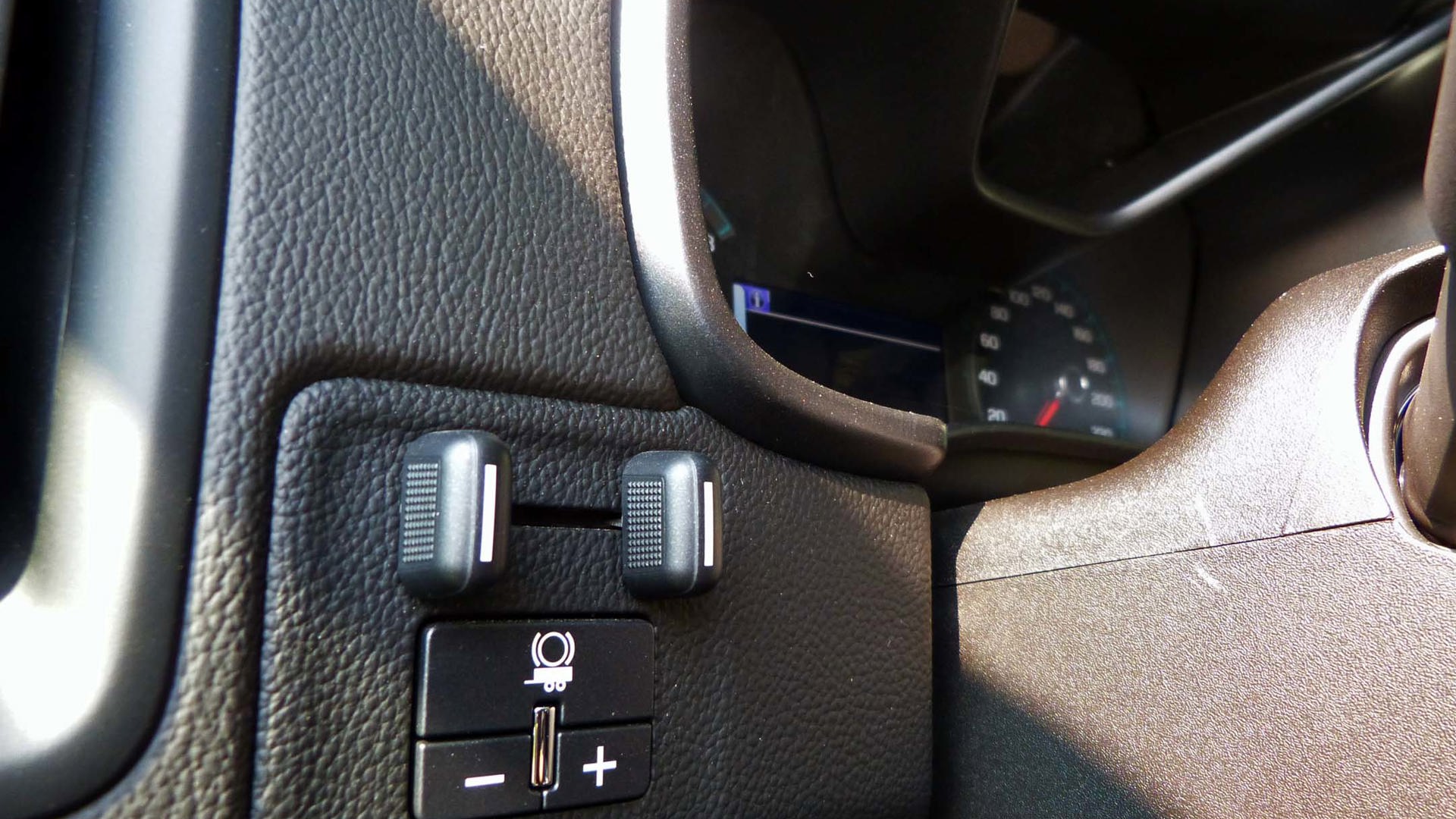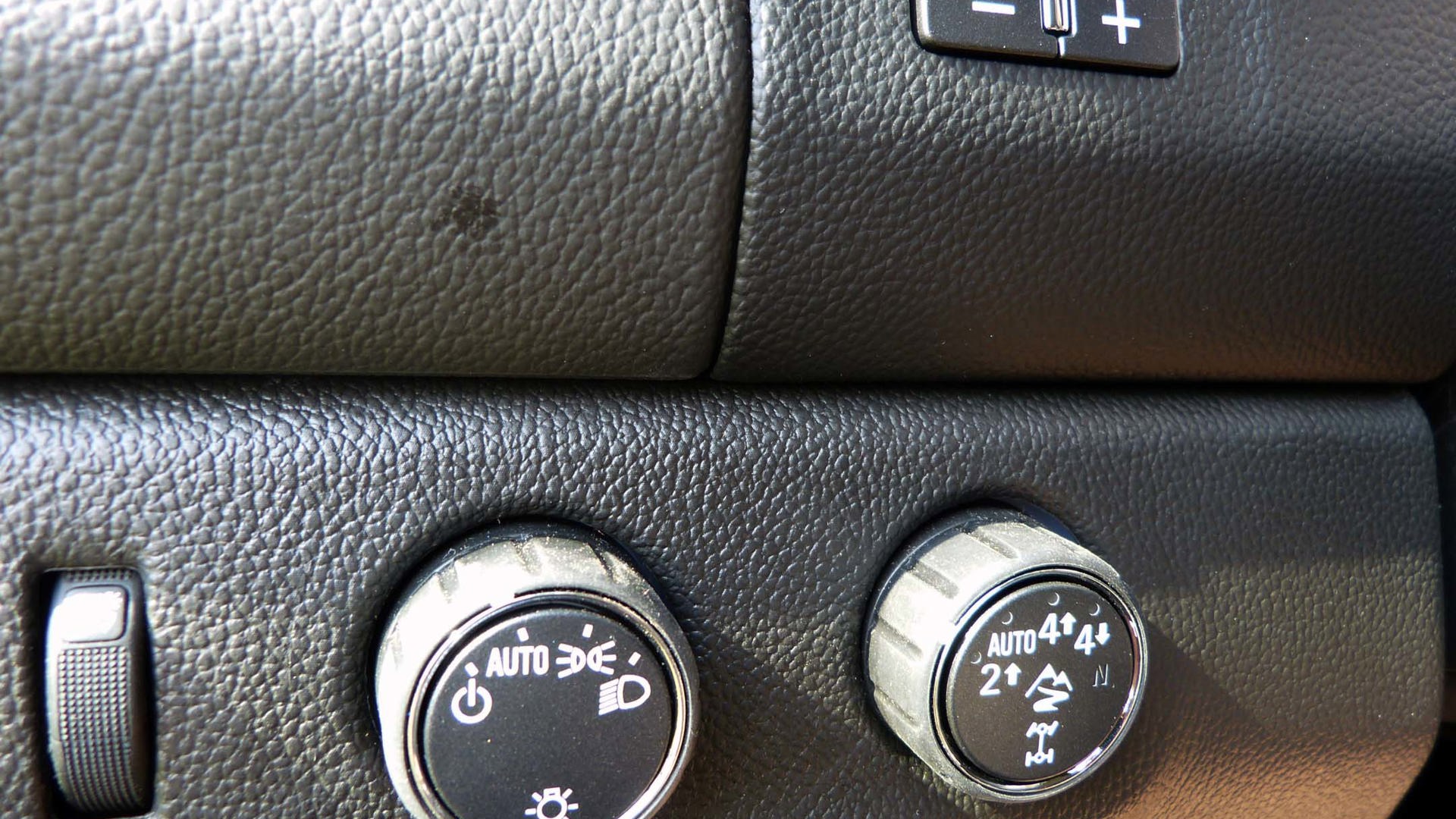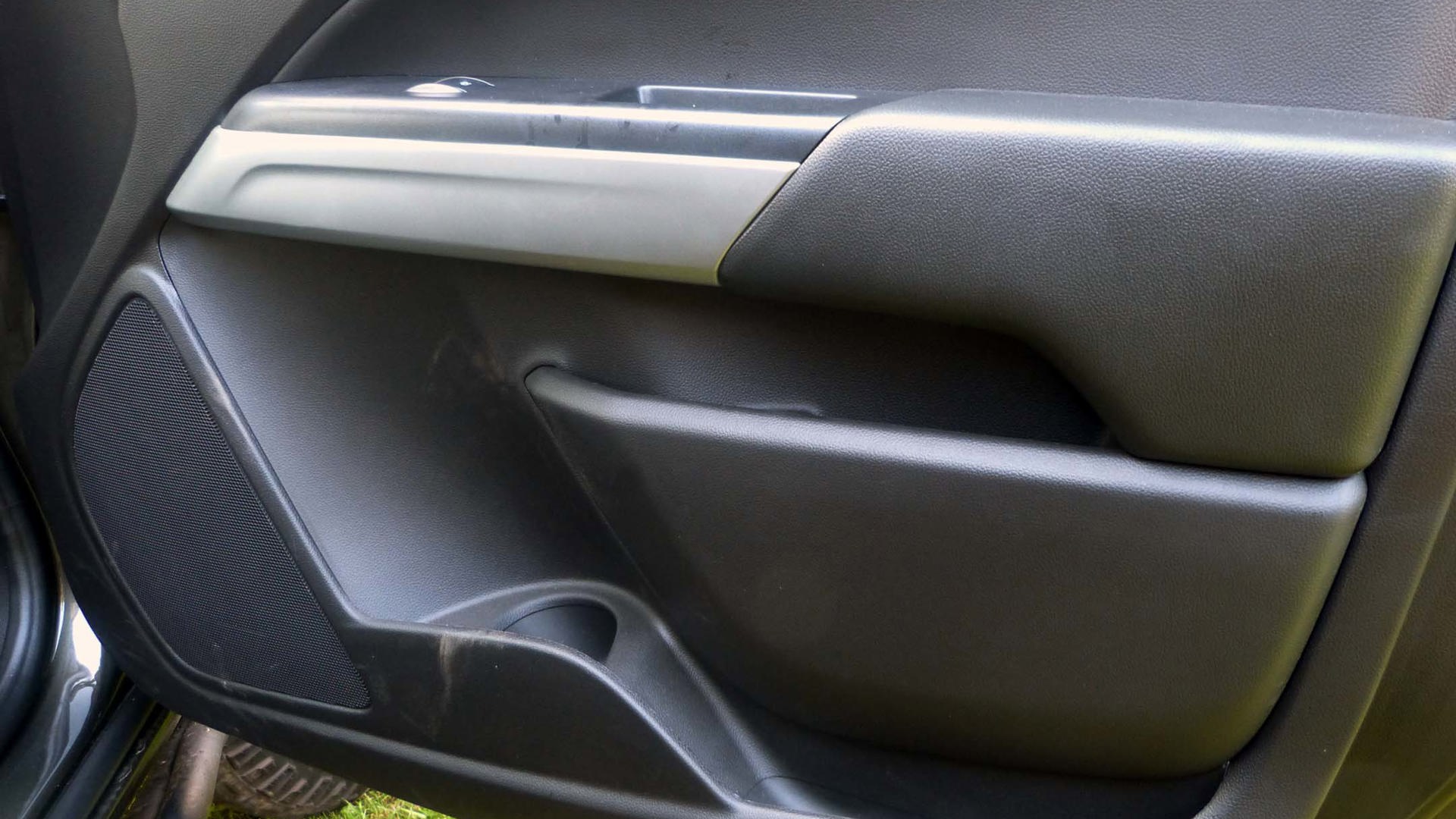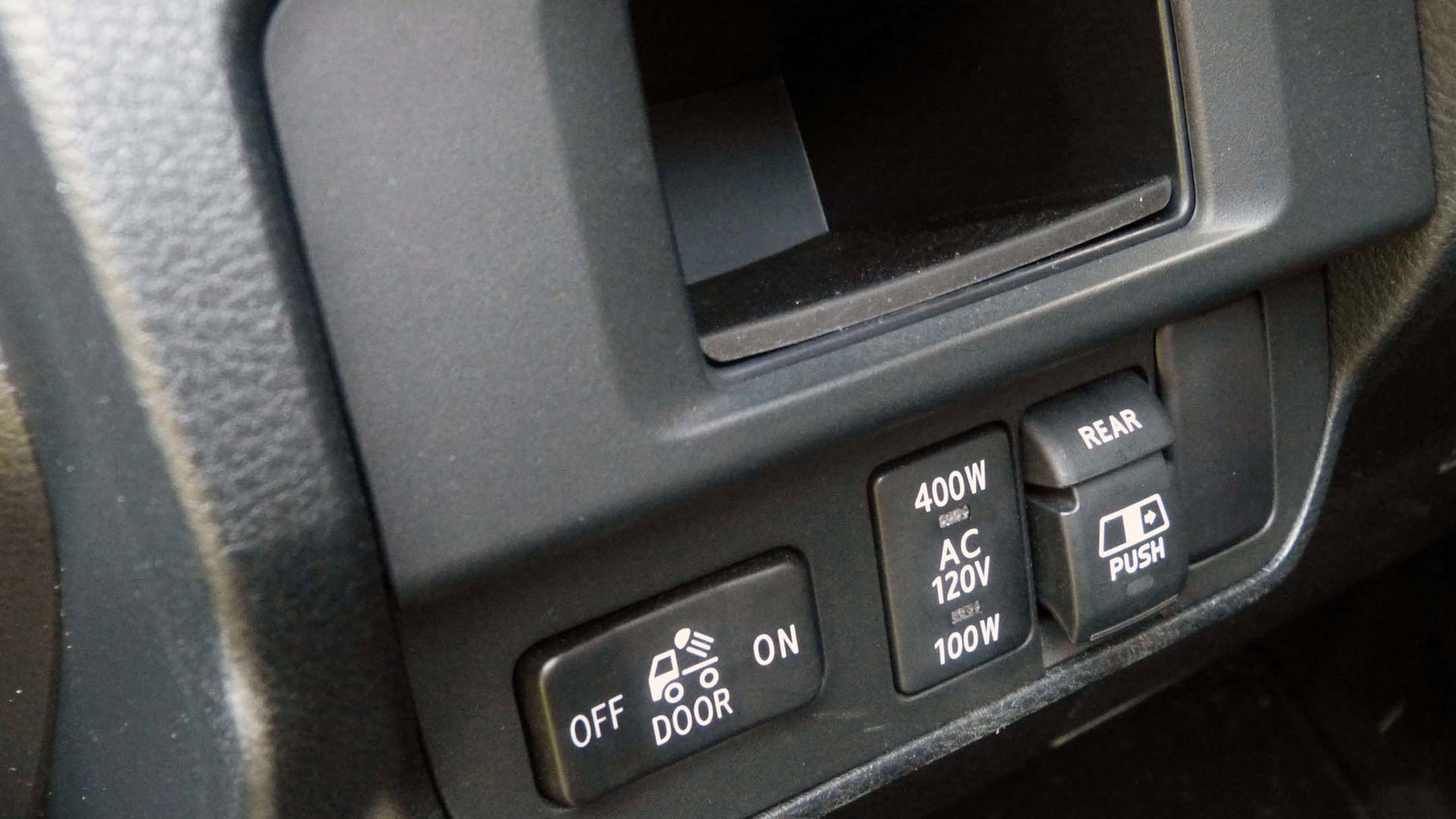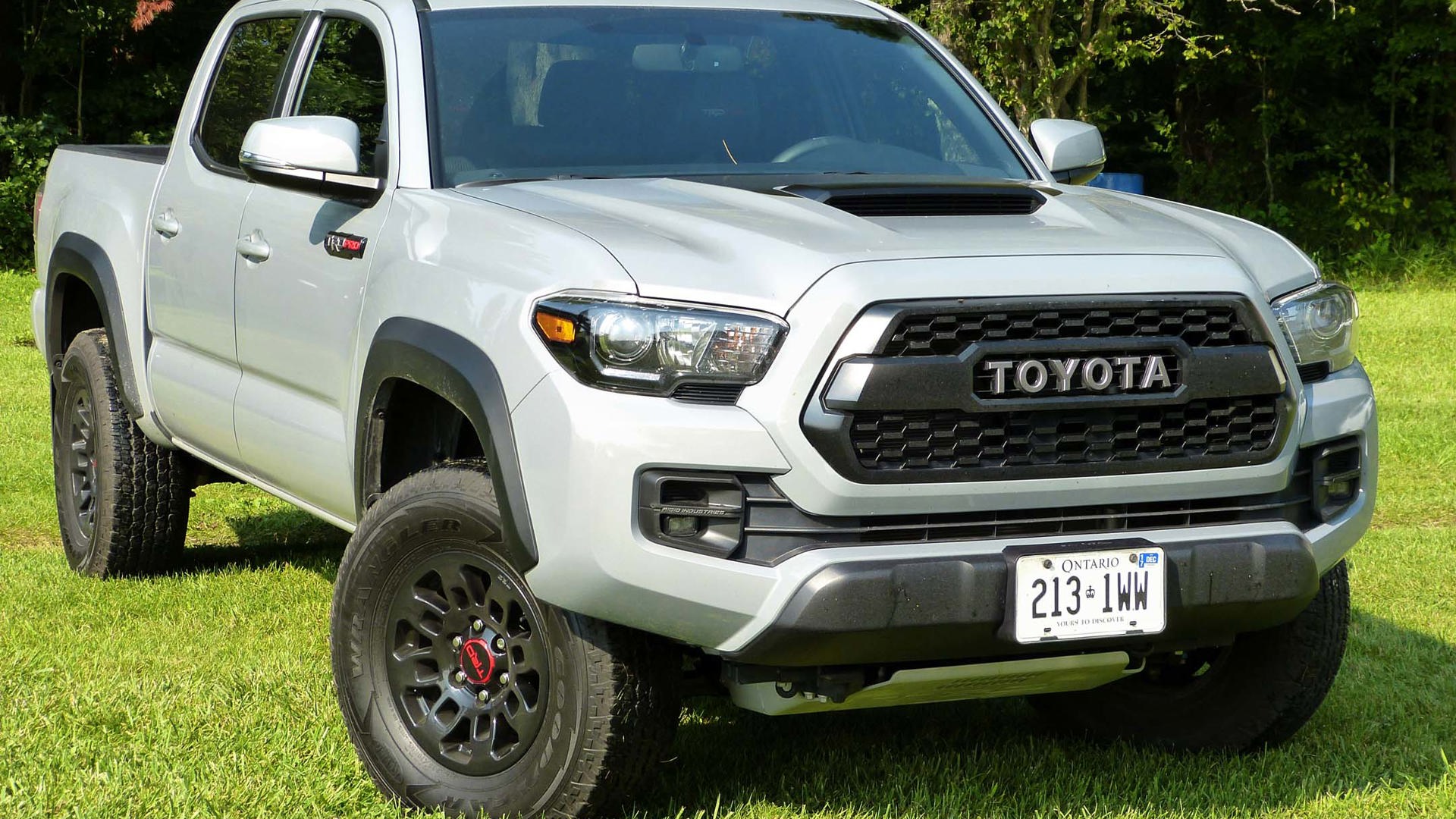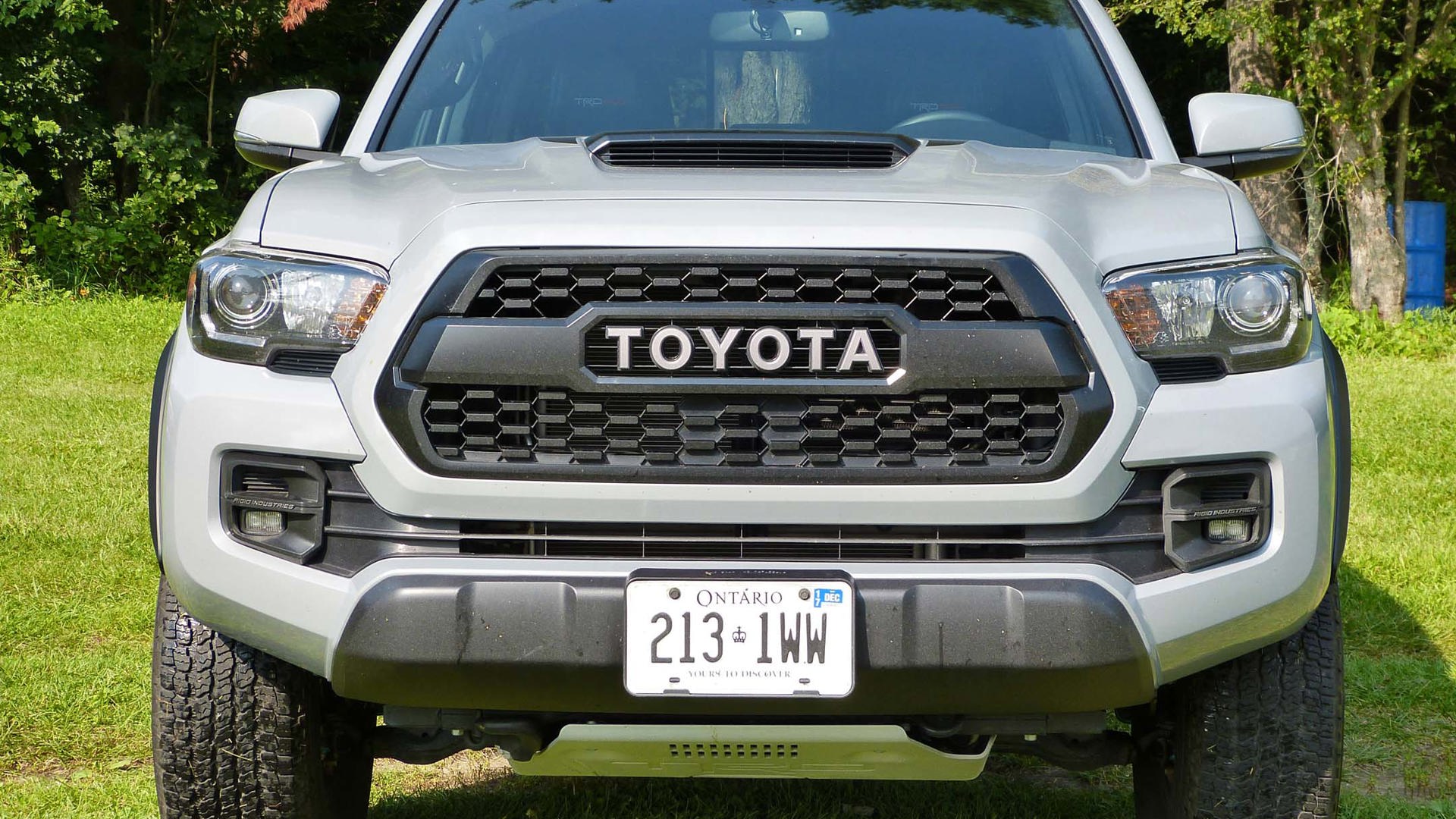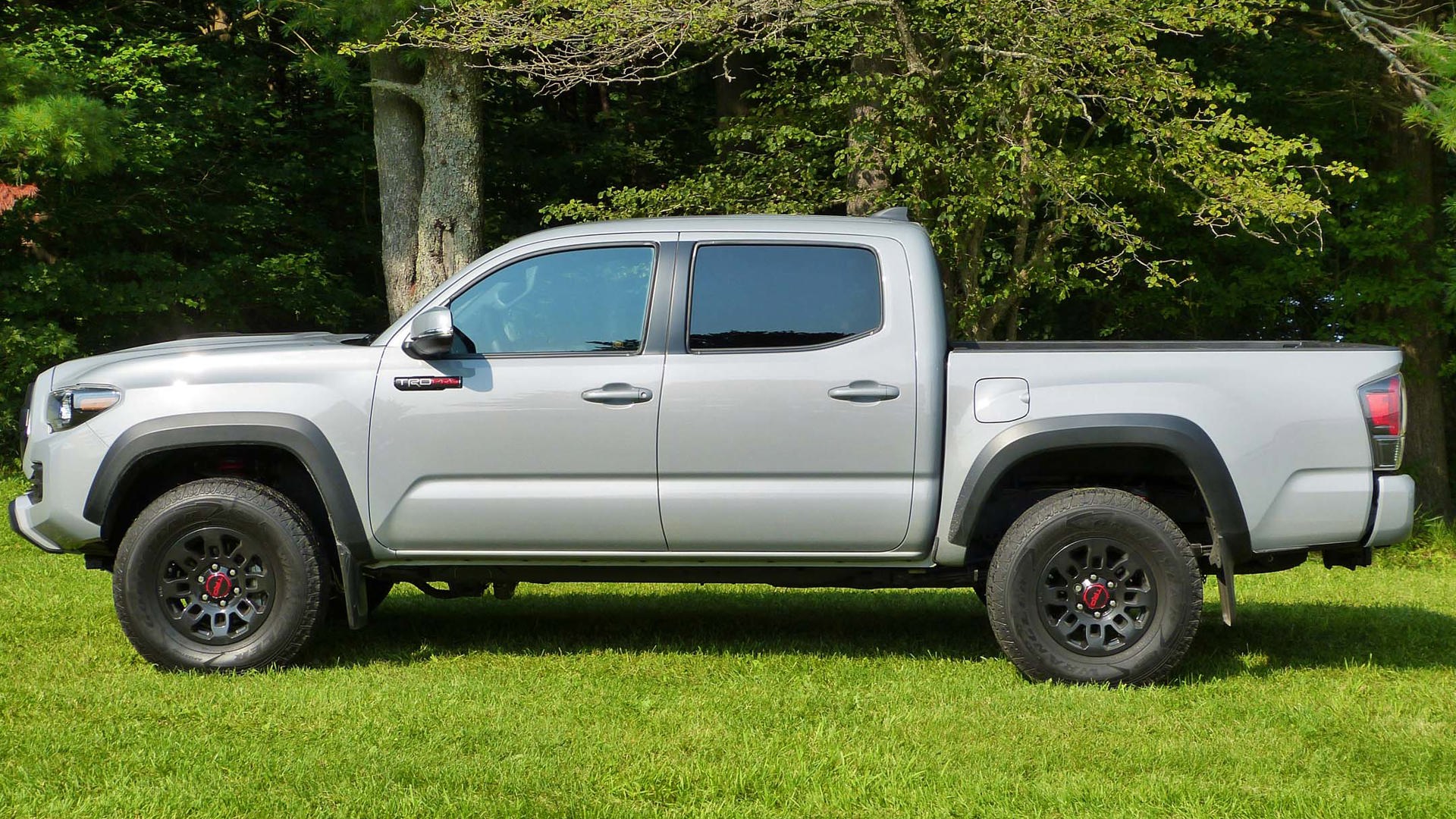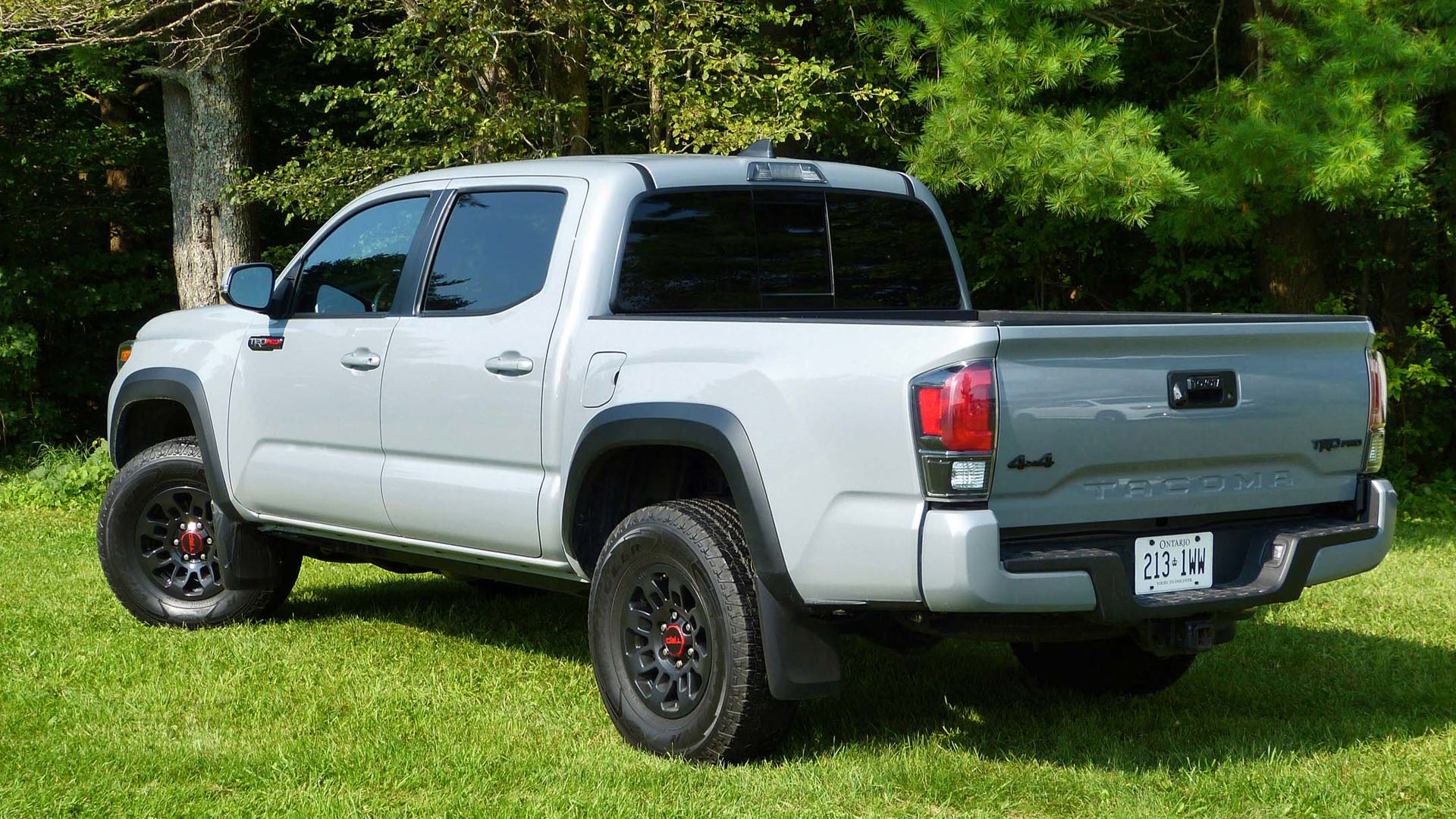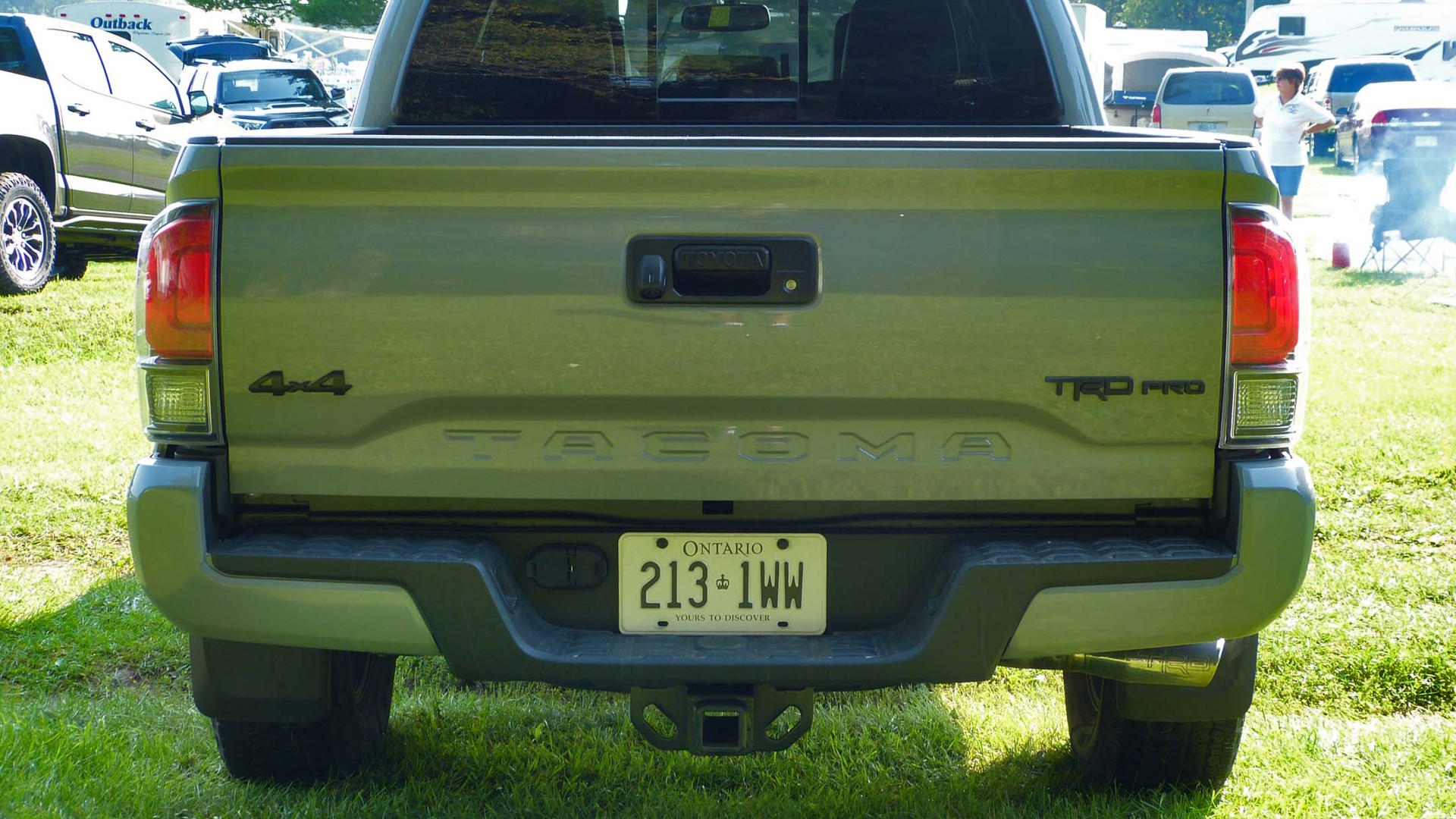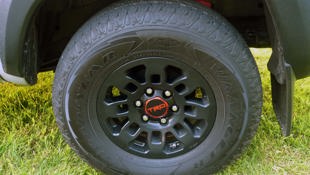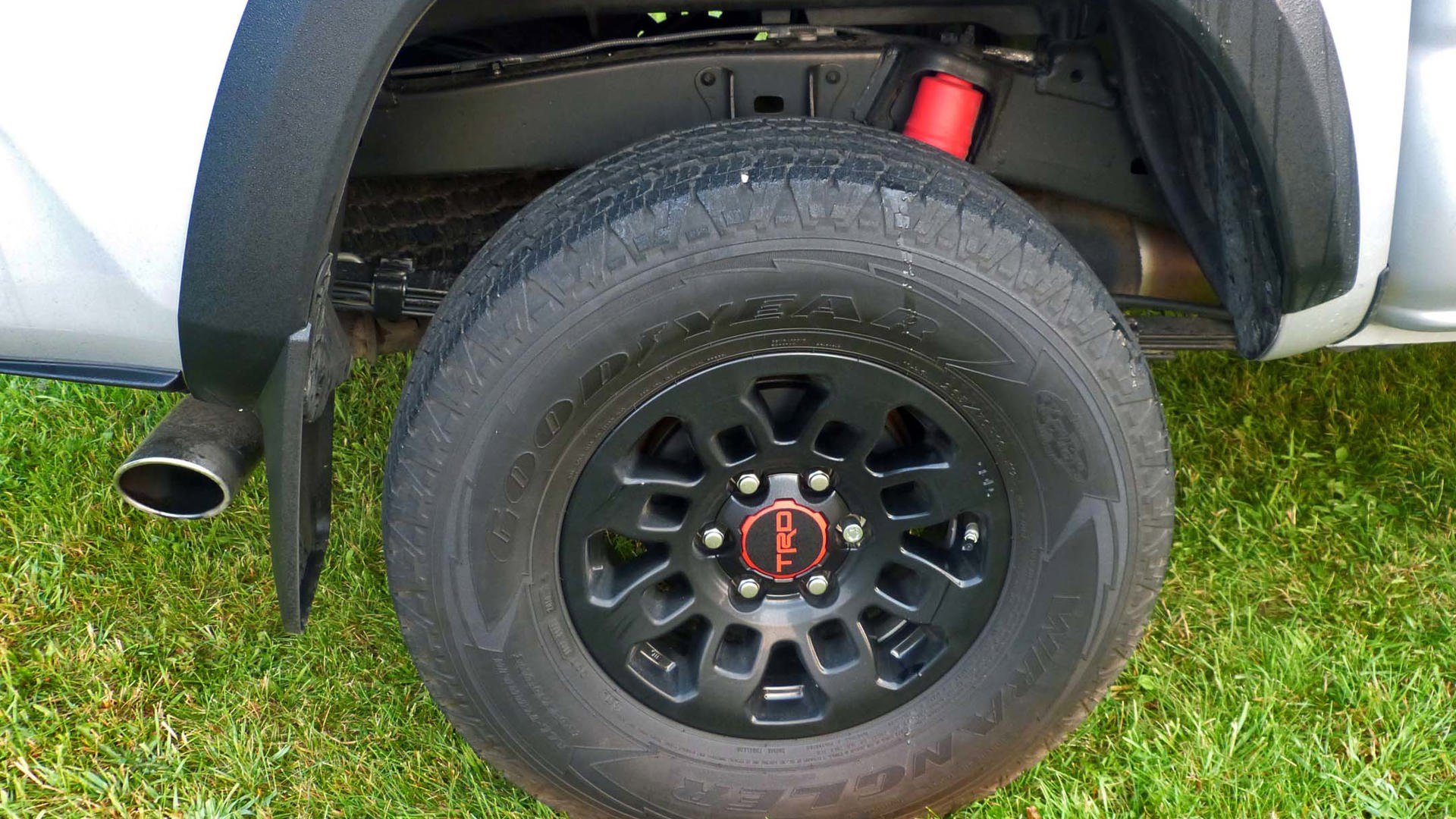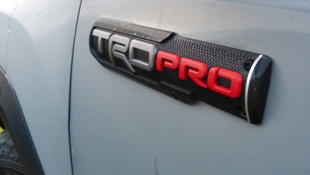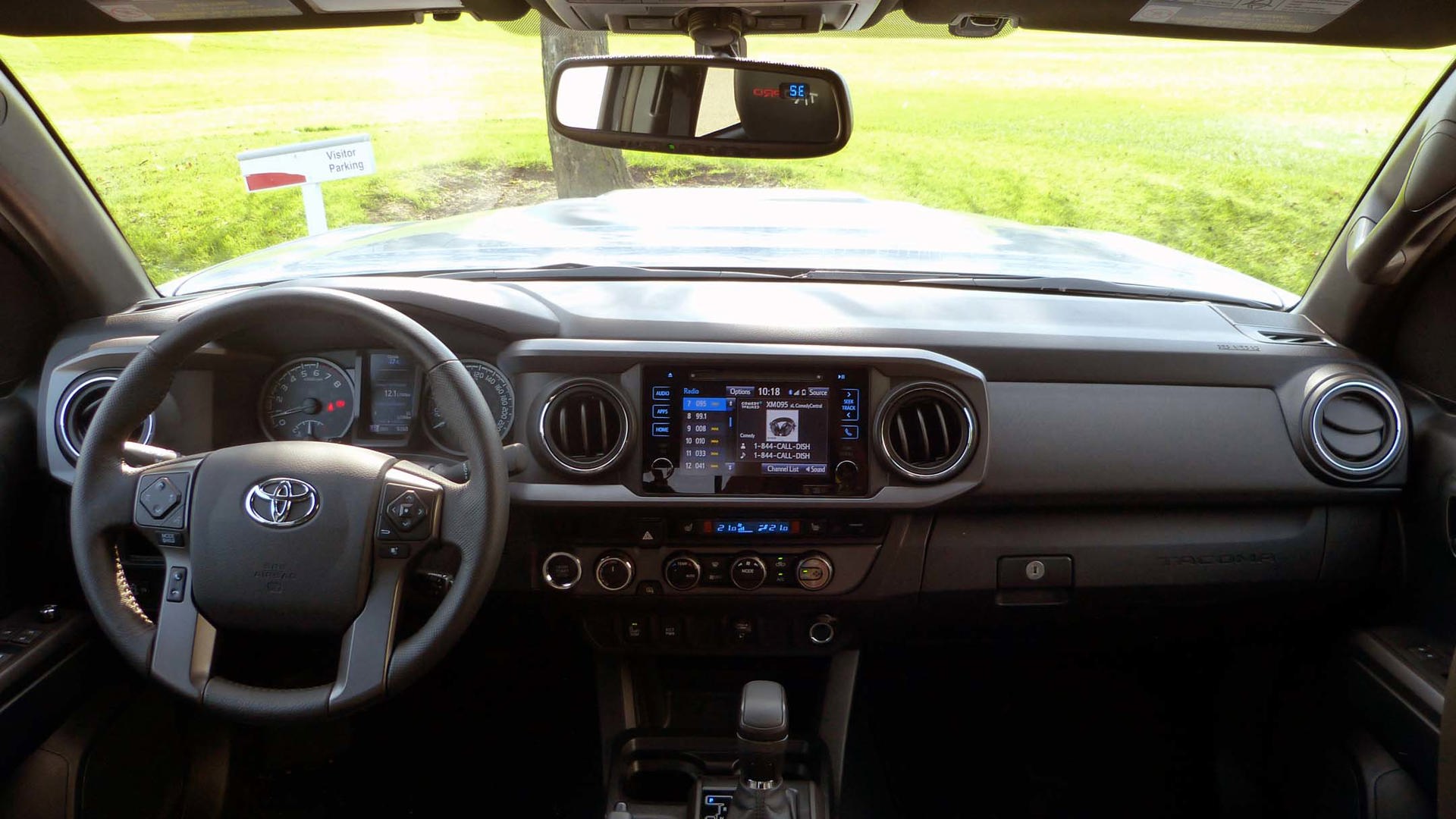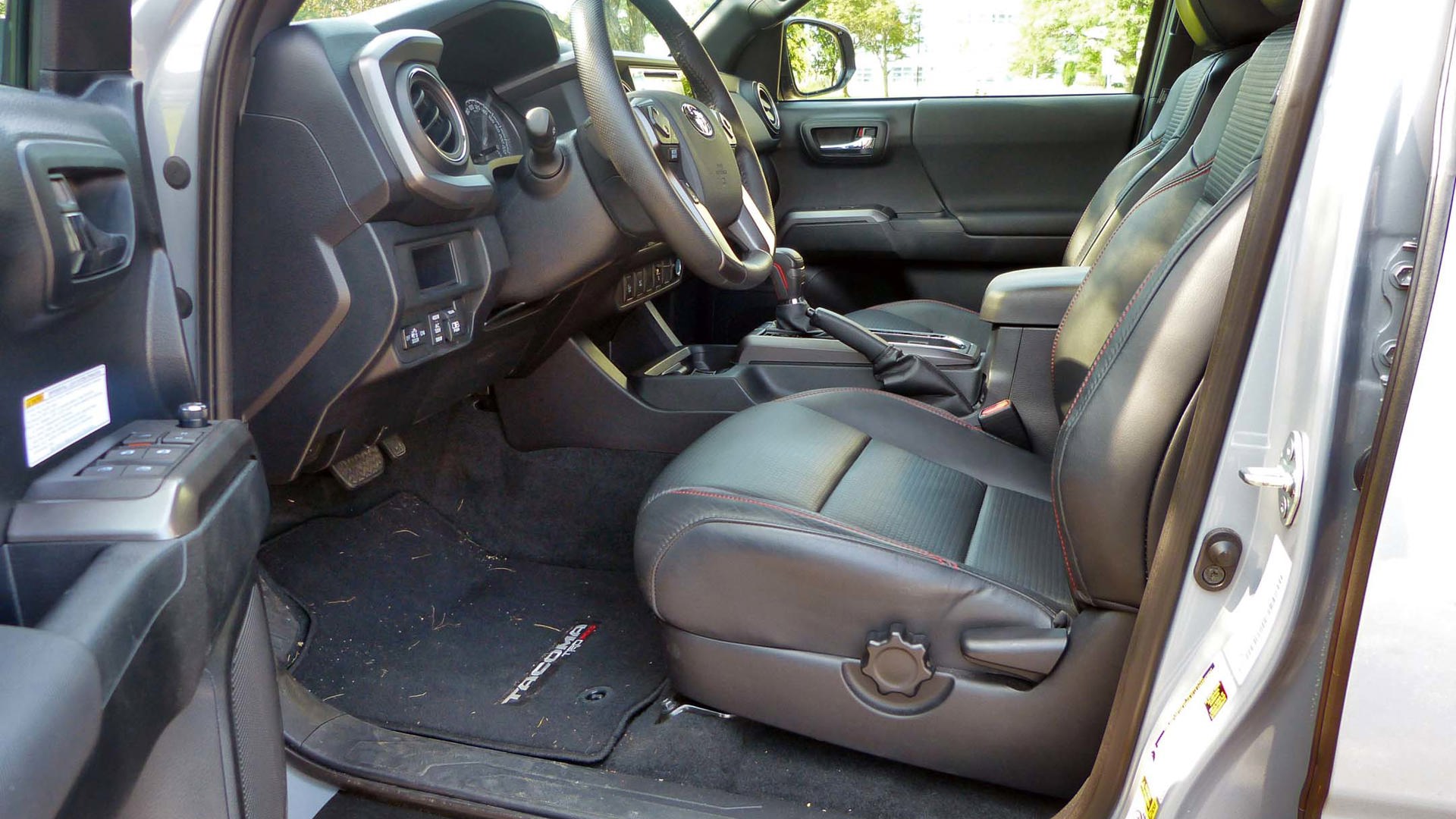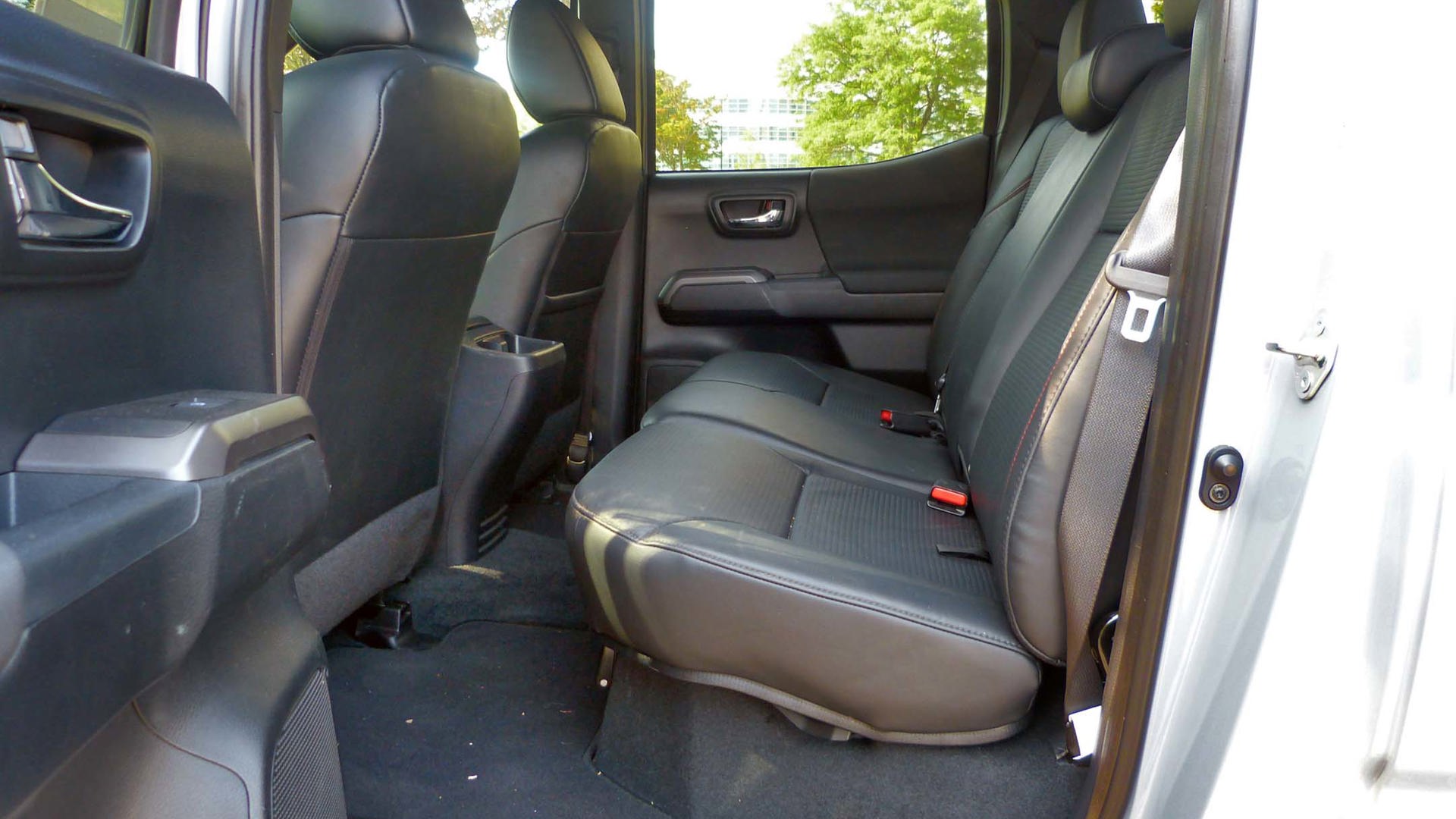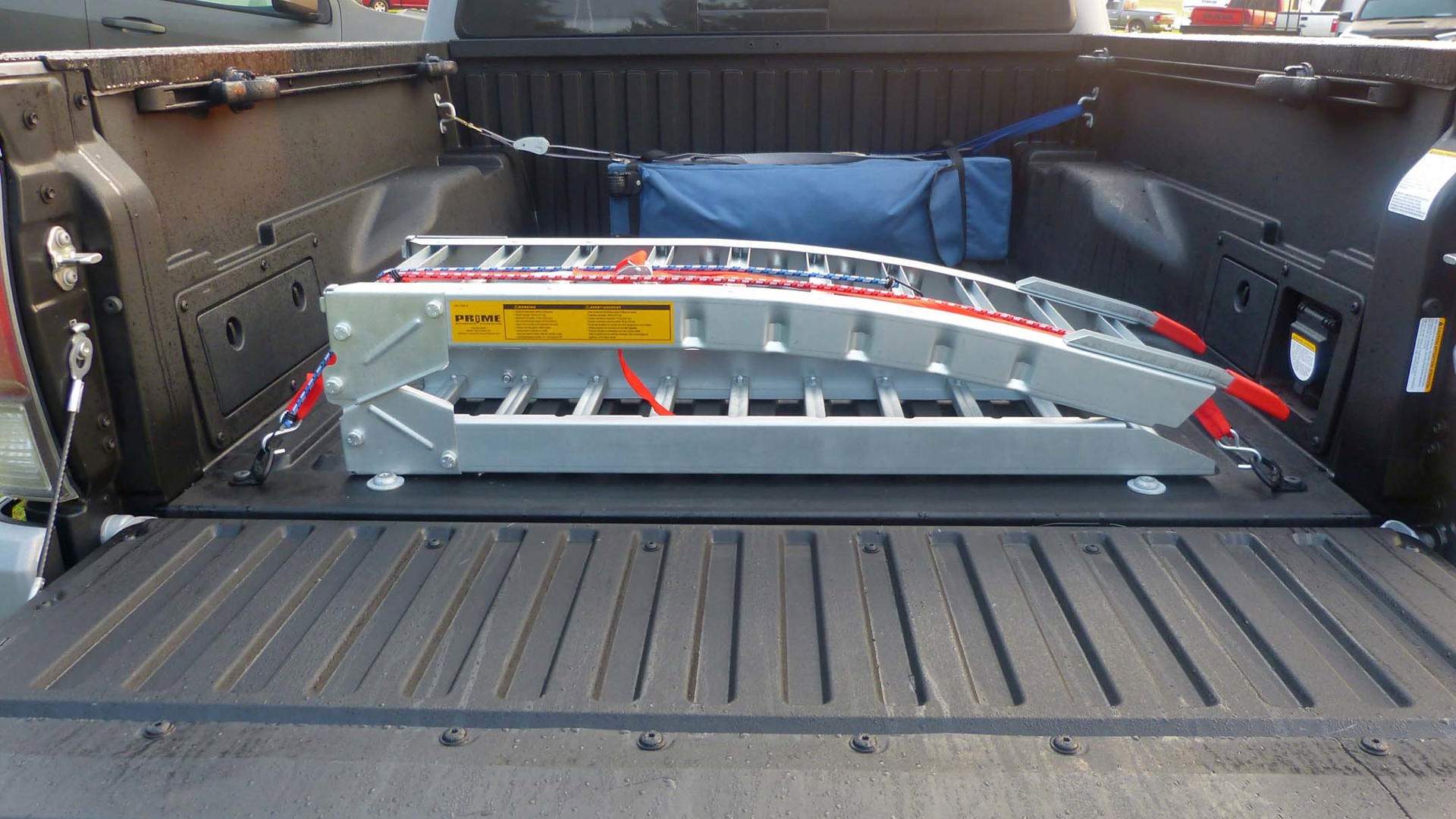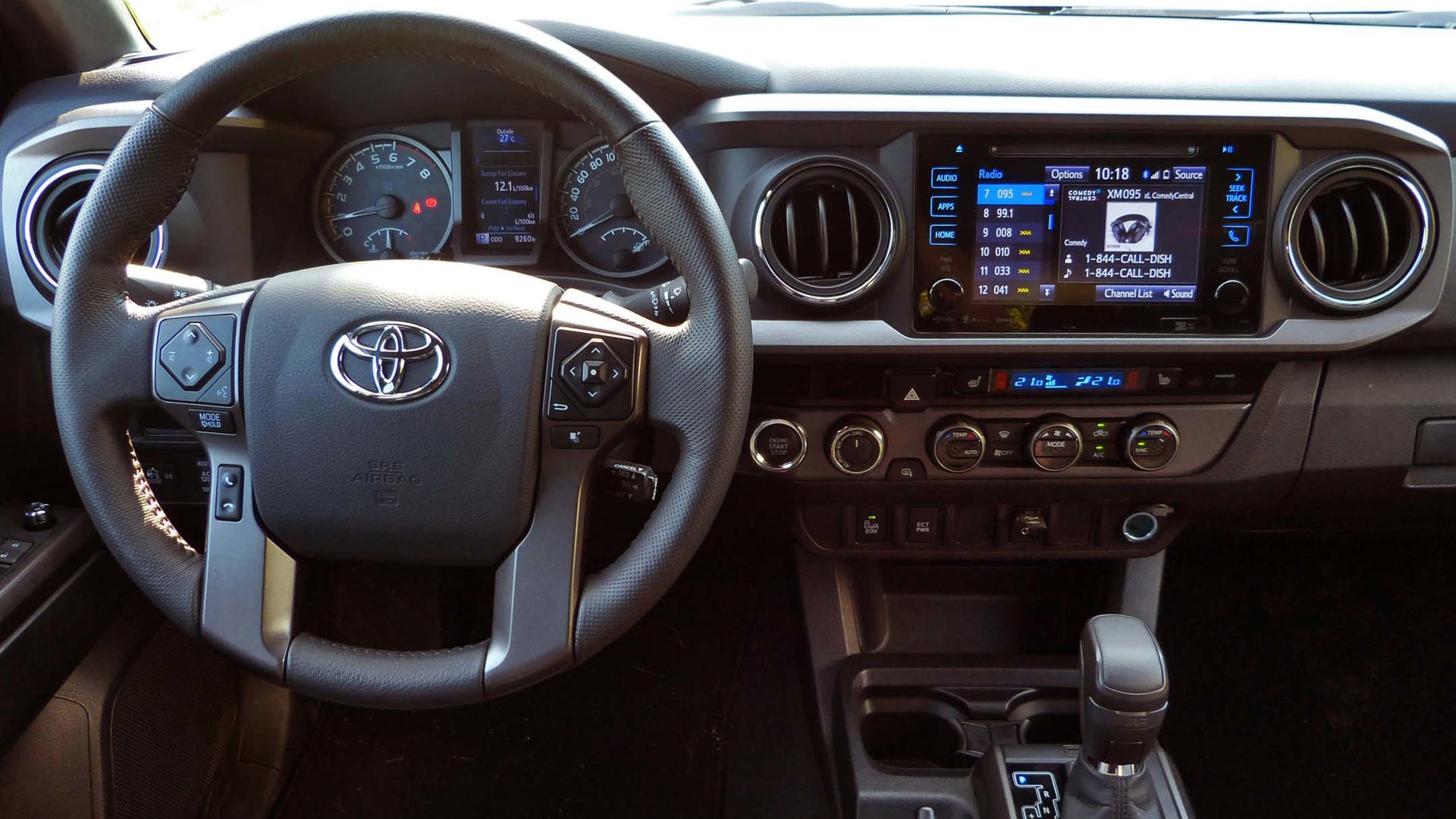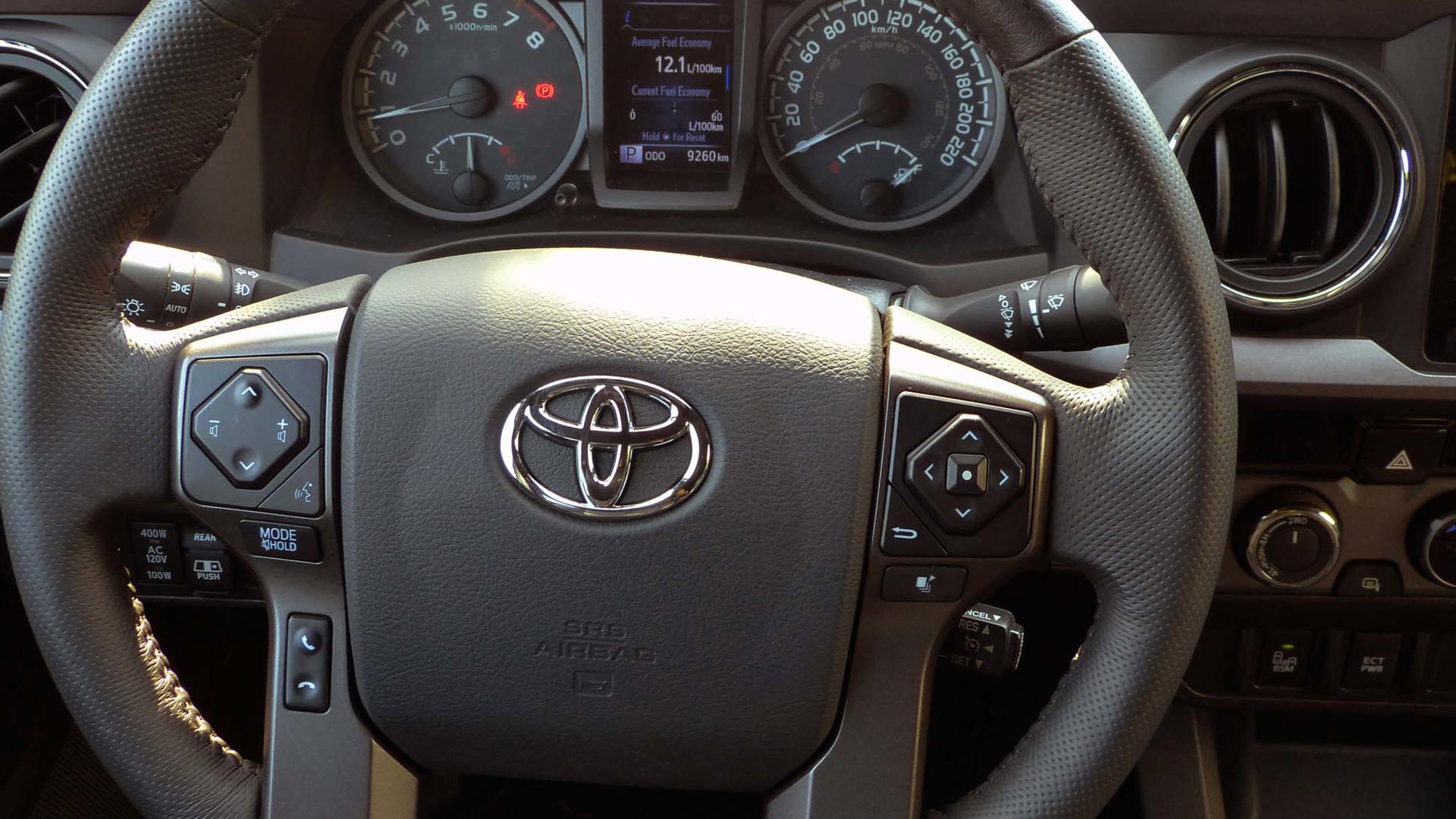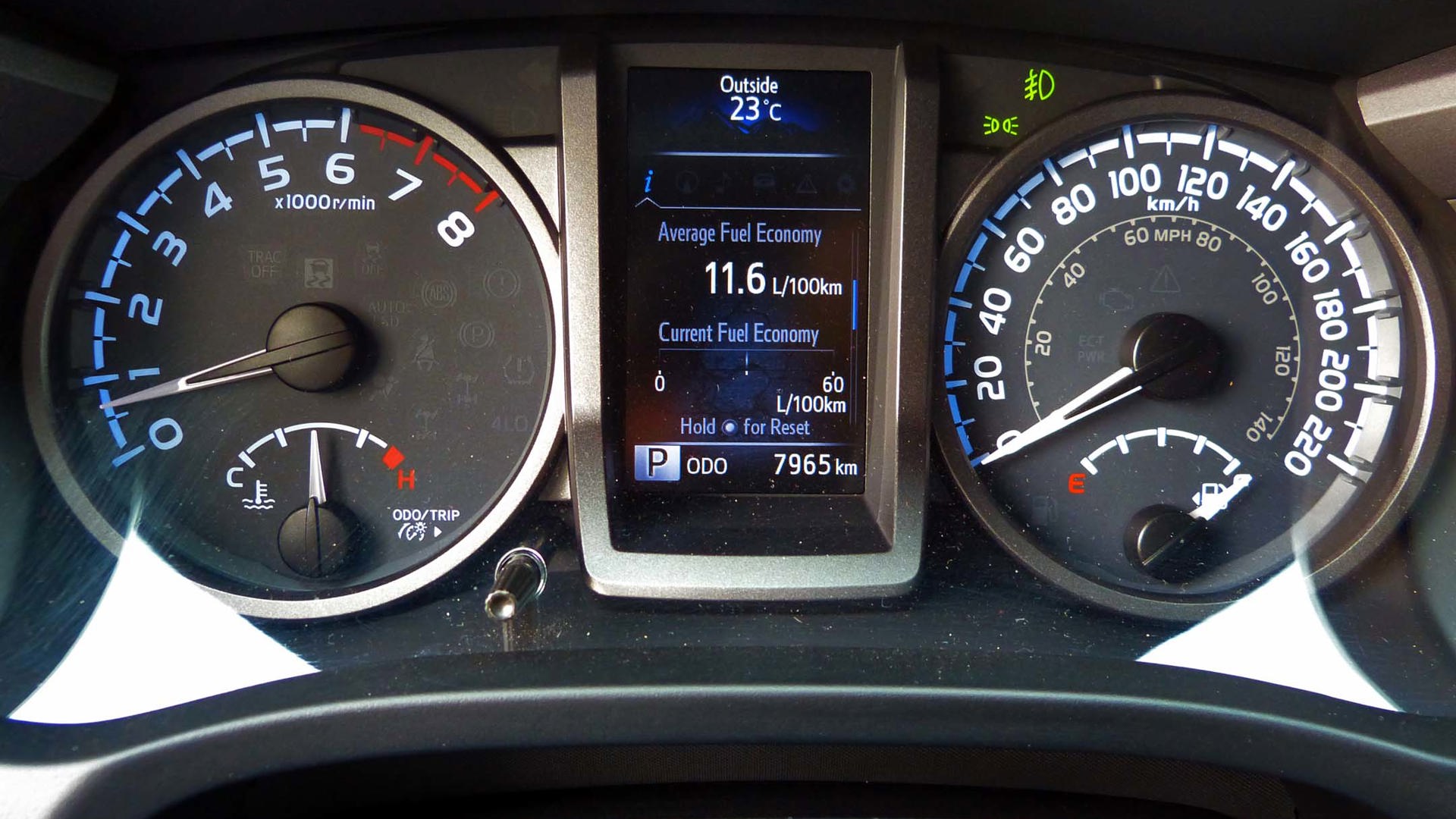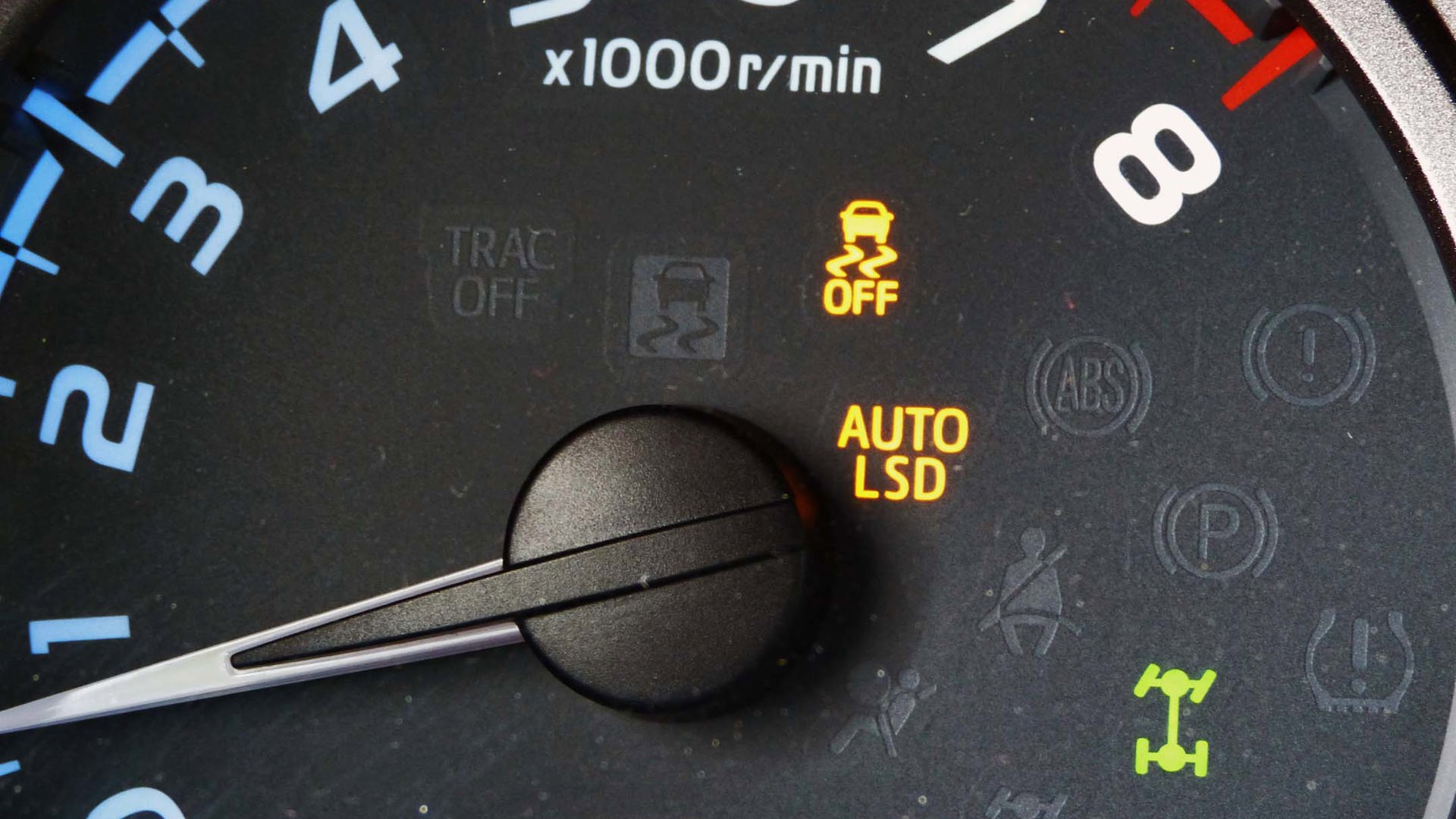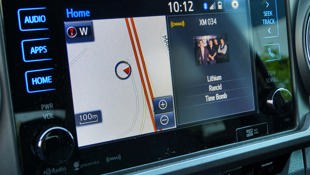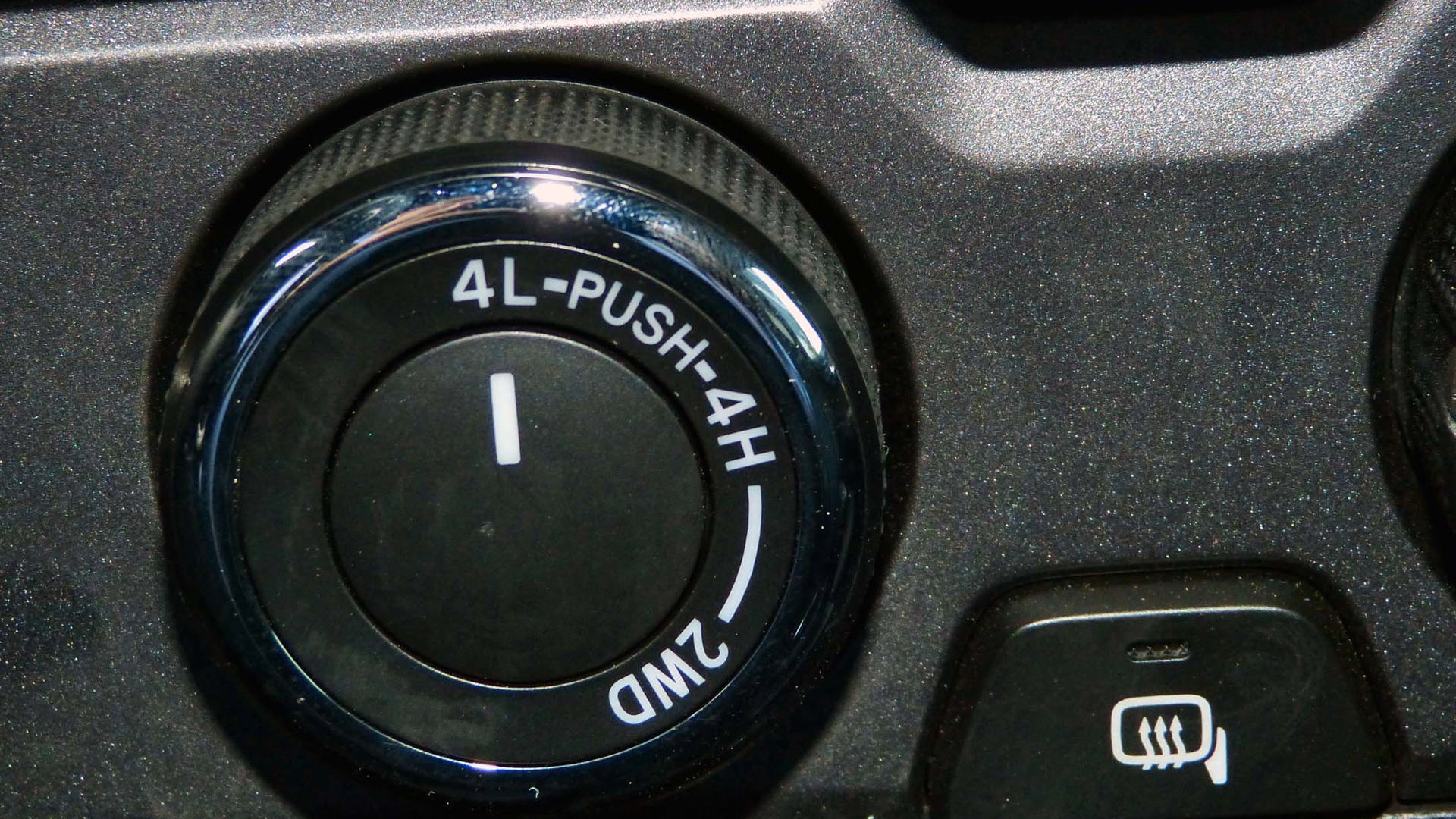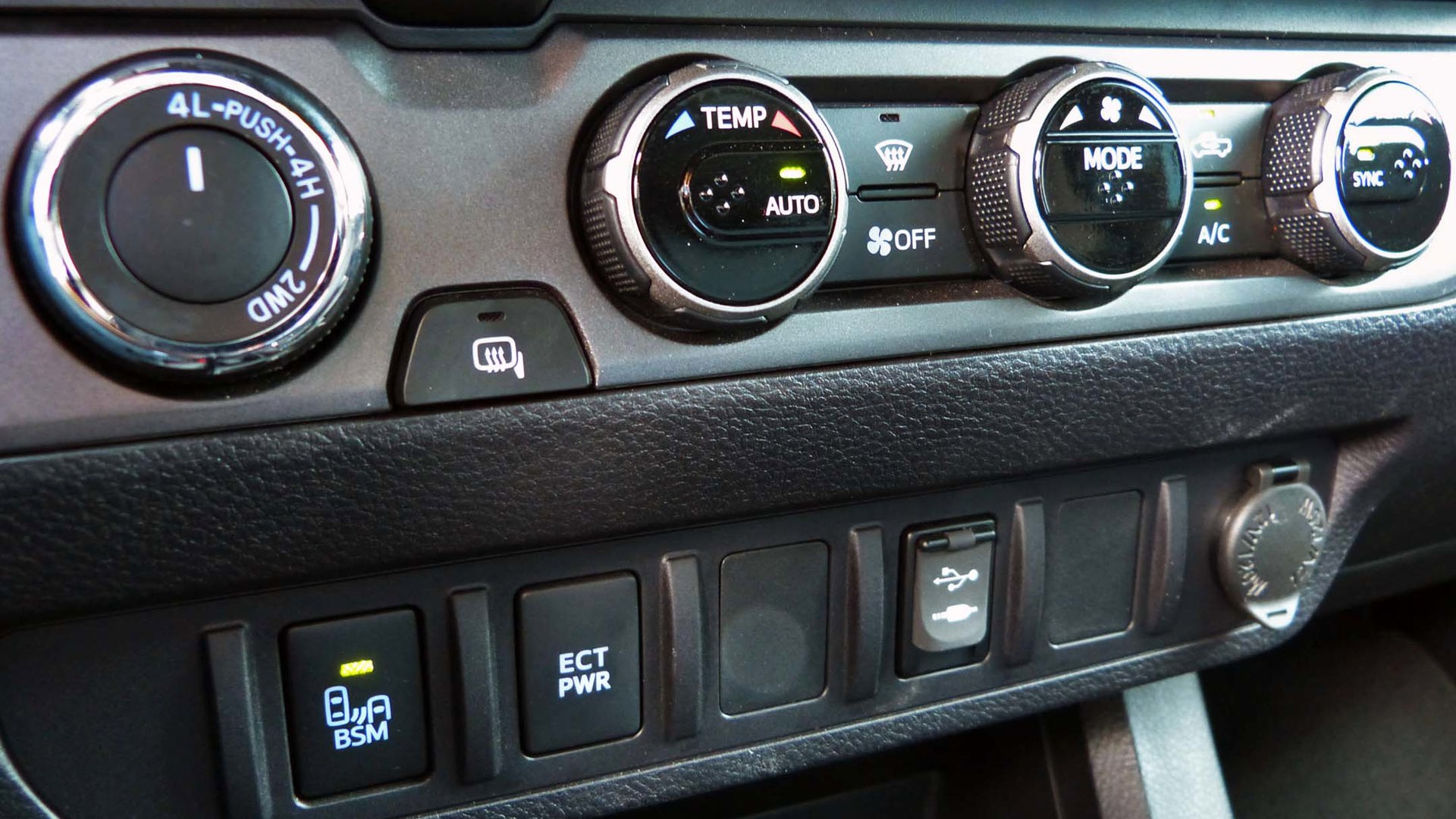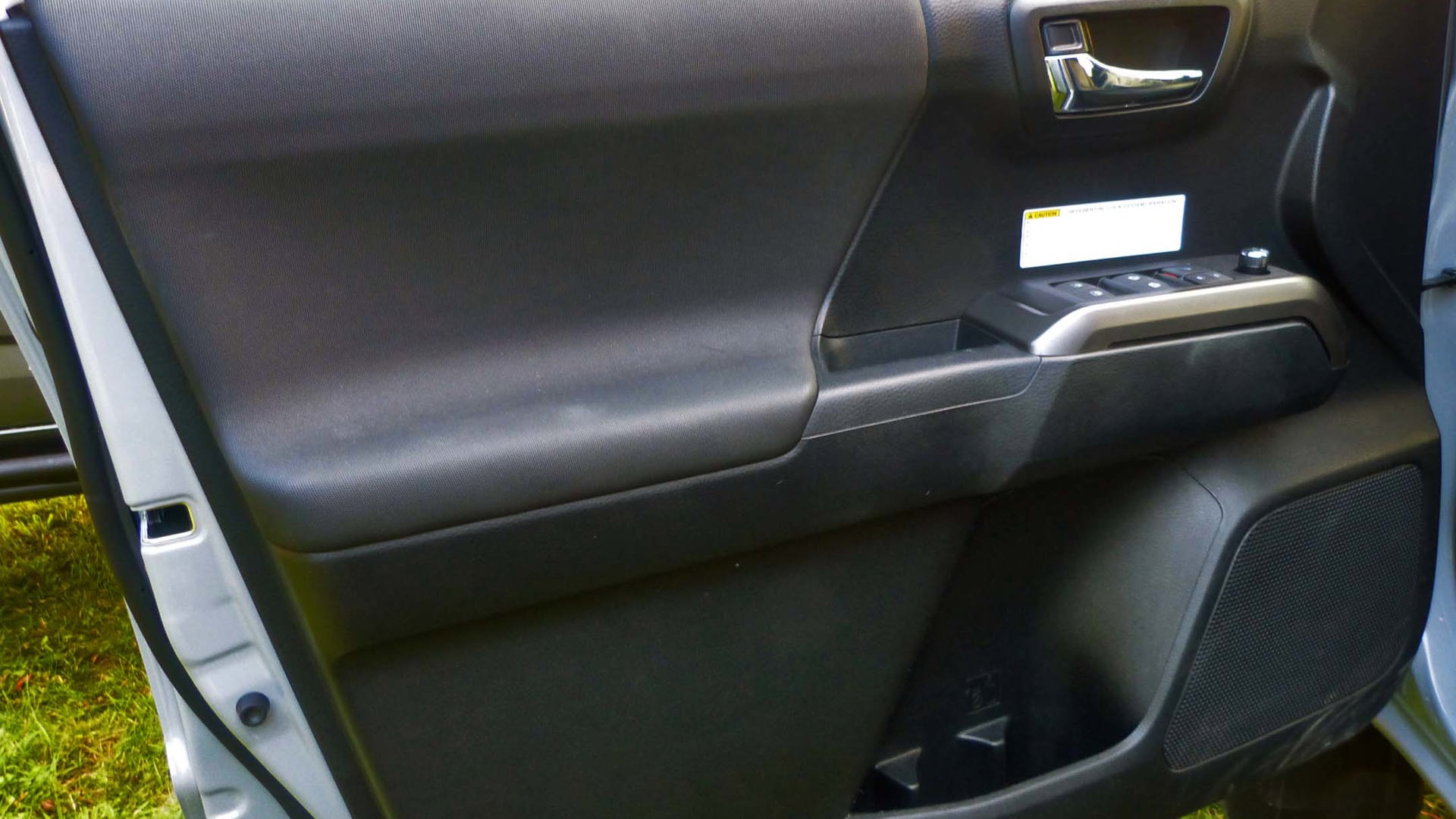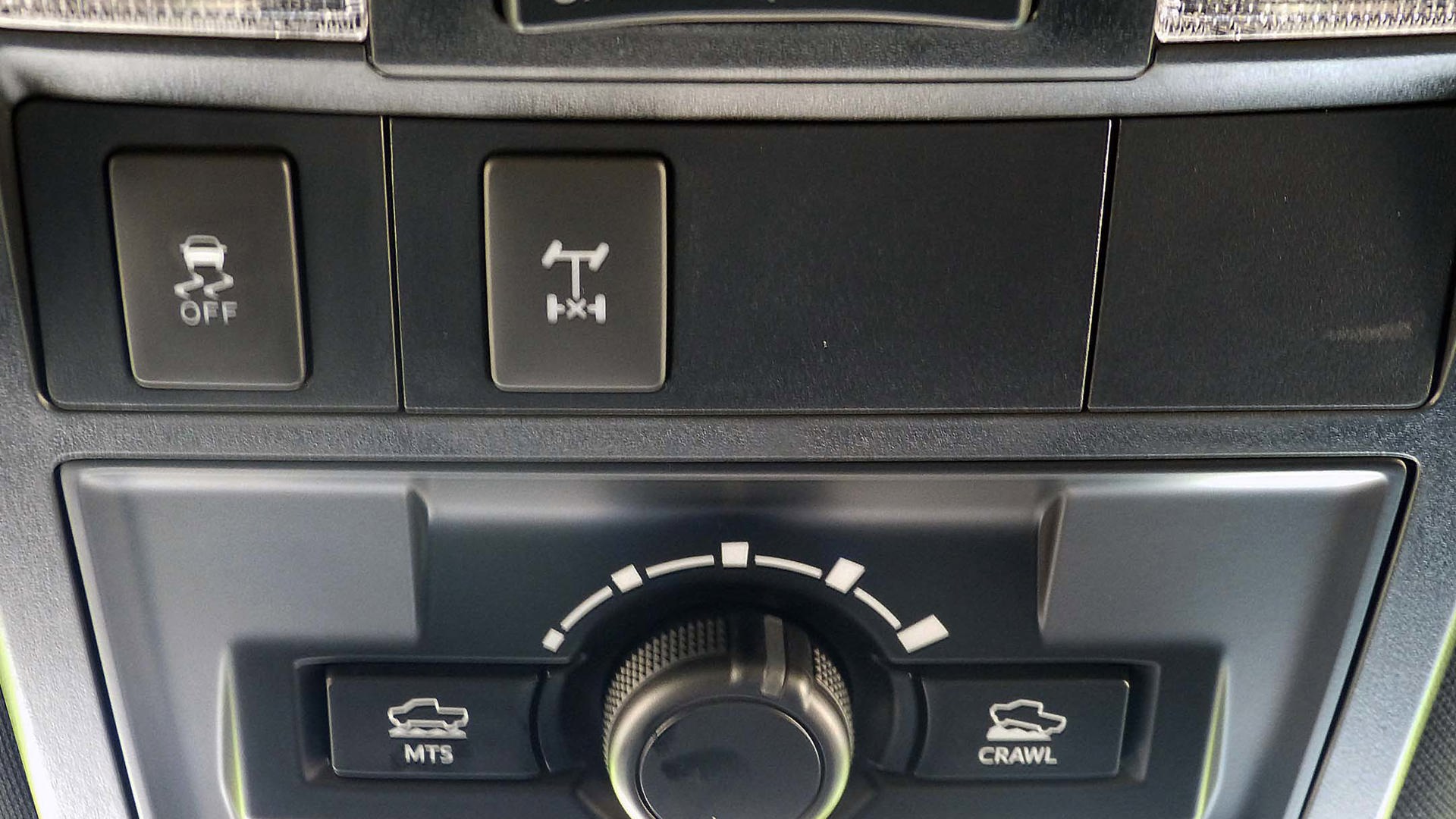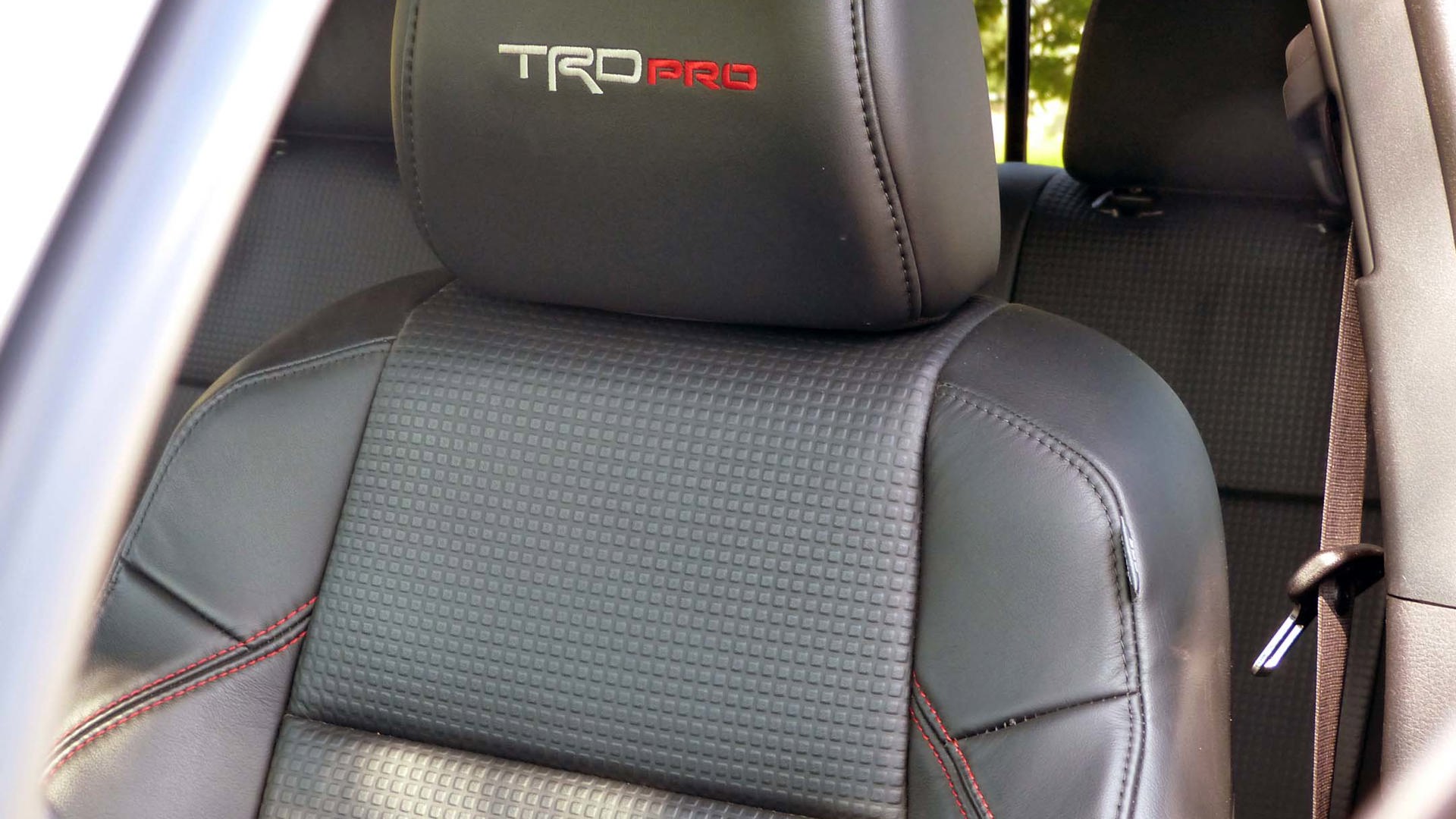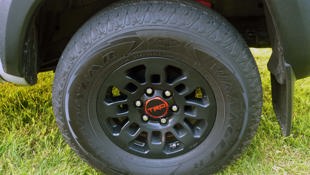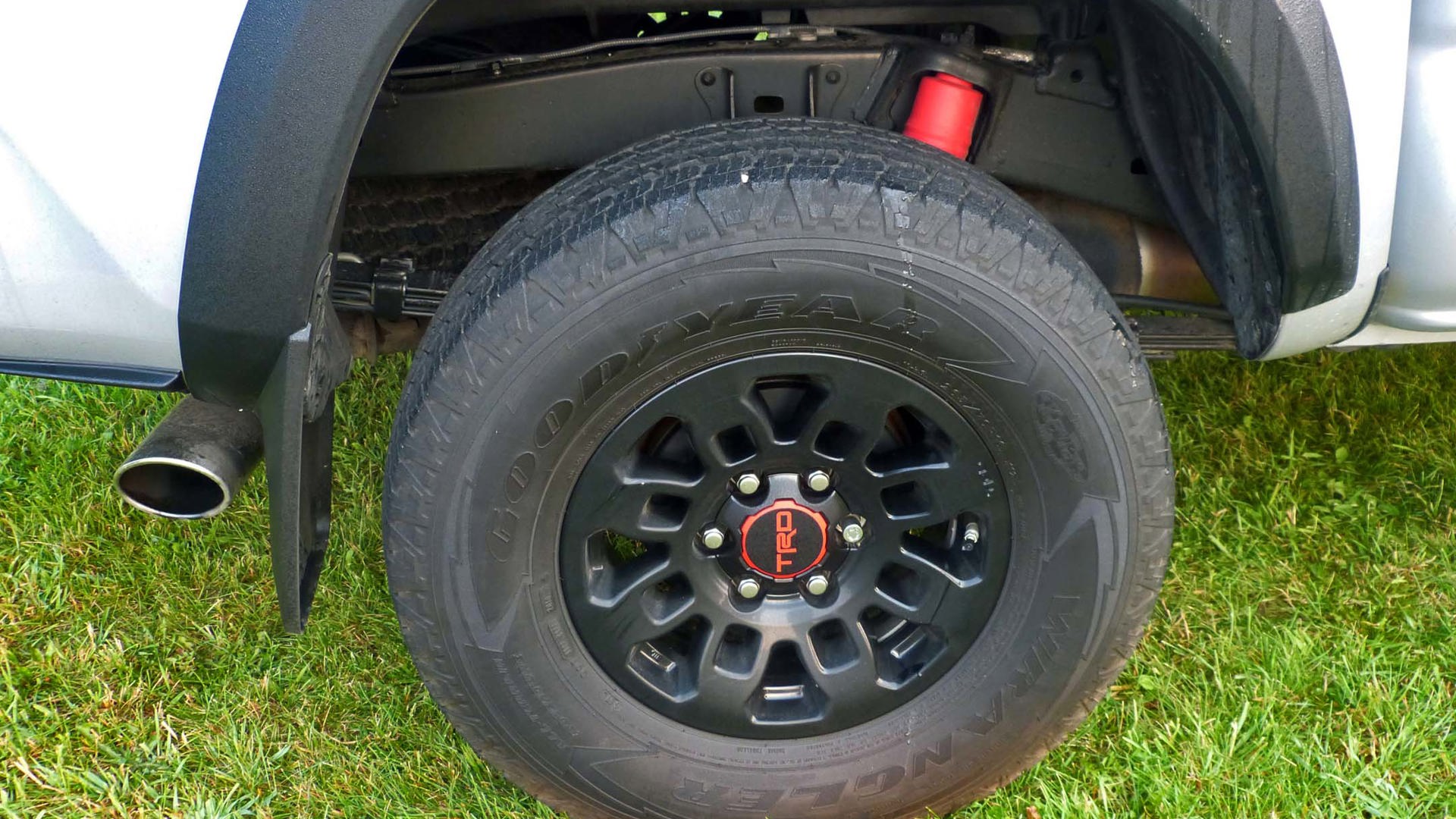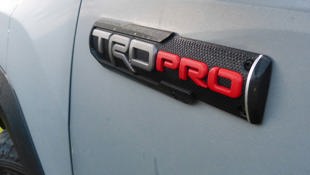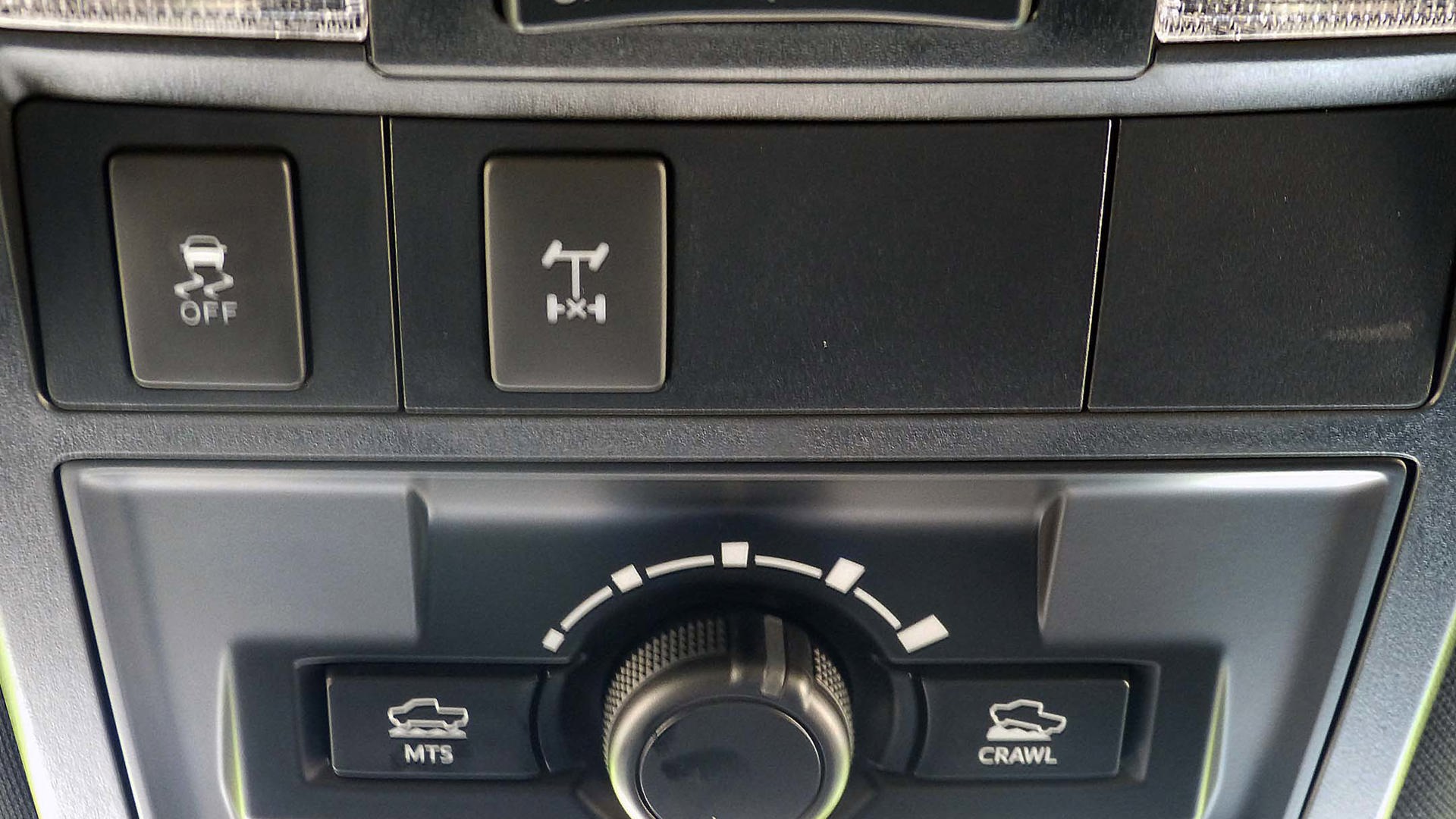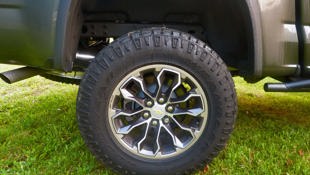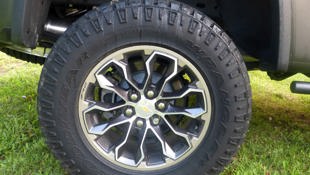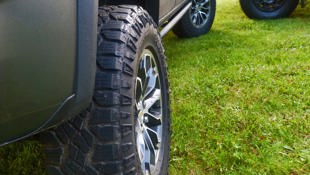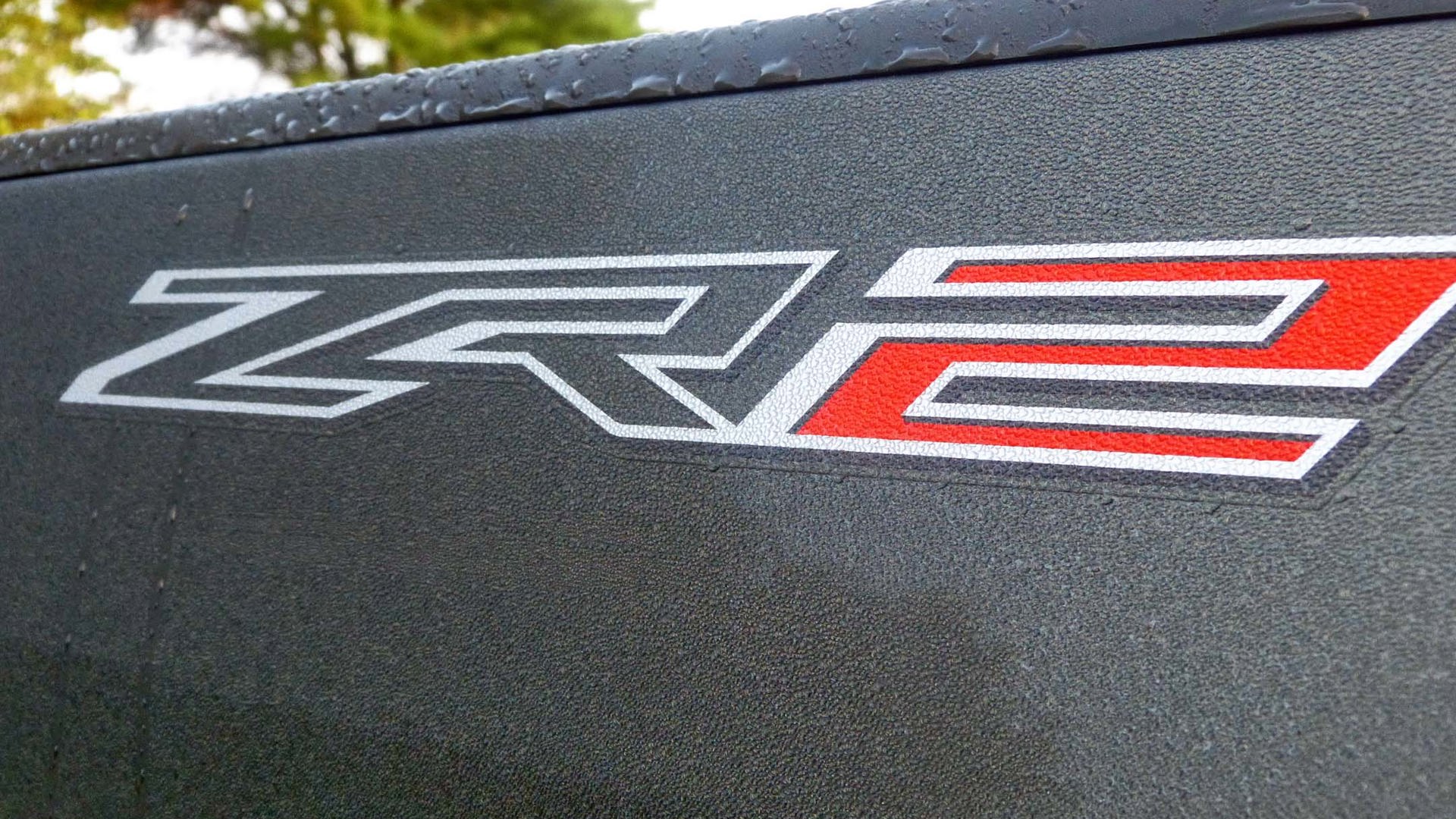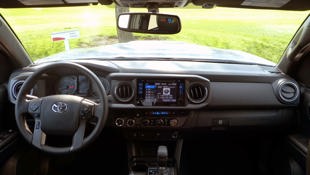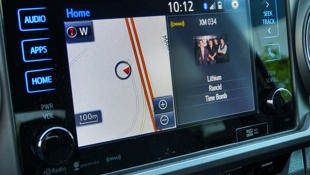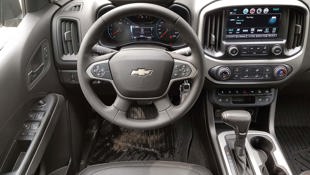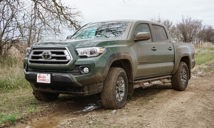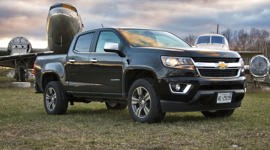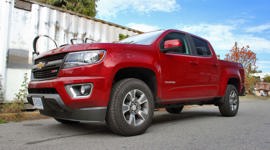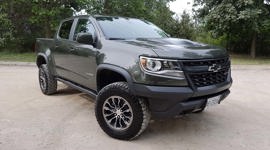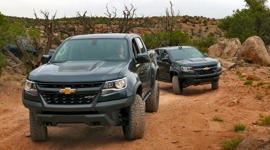Comparison Data
|
2017 Toyota Tacoma TRD Pro
|
2017 Chevrolet Colorado ZR2
|
|---|---|
|
Engine Displacement
3.5L
|
3.6L
|
|
Engine Cylinders
V6
|
V6
|
|
Peak Horsepower
278 hp @ 6,000 rpm
|
308 hp @ 6,800 rpm
|
|
Peak Torque
265 lb-ft @ 4,600 rpm
|
275 lb-ft @4,000 rpm
|
|
Fuel Economy
13.8/11.7/12.9 L/100 km city/hwy/cmb
|
14.0/9.9/12.2 L/100 km city/hwy/cmb
|
|
Cargo Space
60.5"/154 cm bed
|
62"/157 cm box
|
|
Base Price
$40,445
|
$45,515
|
|
A/C Tax
$100
|
$100
|
|
Destination Fee
$1,760
|
$1,700
|
|
Price as Tested
$55,145
|
$51,045
|
|
Optional Equipment
$12,850 – TRD Pro Package $12,850
|
$3,730 – Deepwood green metallic paint $495; 8-inch touchscreen with navigation $795; Bose premium speaker system $685; engine block heater $150. Dealer-installed spare tire carrier $715; cargo bed lamp $310; all-weather floor liners $205; black Bowtie emblems $175; cargo tie-down rings $125; wheel lock package $75
|
This wasn’t supposed to be a comparison test. But I had booked the Tacoma TRD Pro, and we just happened to have access to the 2017 Chevrolet Colorado ZR2 at the exact same moment.
For those who wish for a simpler time, the Tacoma will delight. It drives more like a truck, but in a genuinely charming way. Of the two, the Chev drives much more like a car, courtesy of that trick suspension.
So, I whipped up a quick comparison test.
In the grey corner, we have the $55,145 2017 Toyota Tacoma TRD Pro. This stalwart of the mid-size pick-up segment is well loved by its owners for ruggedness, off-road capability, and general workhorse demeanour. It looks tough, it drives tough, and owners never sell them. Try to buy one second-hand – the prices will blow your mind.
In the also-grey-but-with-a-little-bit-of-green-accenting corner, is the 2017 Chevrolet Colorado ZR2. A recent returnee to the mid-size segment, Chevrolet’s take on the mid-size workhorse employs trick shocks built by Canada’s own Multimatic, in a modern package that employs all of Chevrolet’s connectivity magic to entice back market share.
Drivetrain
Toyota brings to this battle its long-running 3.5L V6, good for 278 hp at 6,000 rpm and 265 lb-ft of torque at 4,600. Chevrolet’s newer 3.6L V6 ups the ante with 308 horsepower at 6,800 rpm and 275 lb-ft of torque at 4,000. The Toyota’s automatic gearbox has six cogs, the Chevrolet’s eight.
Both are prone to droning and excess engine noise under hard acceleration, but the Toyota more so, while the Chevy’s extra grunt is just enough to be noticeable. That eight-speed transmission does a good job of hiding itself, and despite the Toyota doing less shifts, its box is more obtrusive.
On the fuel economy front, Toyota wins in the city, with its ratings of 13.8/11.7/12.9 L/100 km city/highway/combined. Chevrolet pulls well ahead on the highway, and therefore also wins on the combined figure with ratings of 14.0/9.9/12.2 L/100 km. Both take regular juice.
Neither engine is a highlight, frankly, but the Colorado takes this battle by a slim margin.
Off-Road Chops
The four-wheel drive systems of both trucks are serious business. Both have a two-speed transfer case with 4L, 4H, and 2WD modes selectable via a toggle.
A two-inch lift for the ZR2 gives it better ground clearance than the stock Colorado, boosting it to 226 mm. It’s good for 30 degrees of approach and 23 degrees of departure angle.
With 238 mm of ground clearance, 29 degrees of approach and 23.5 degrees of departure angle the Tacoma is already pretty solid off-road. The TRD Pro package adds extra wheel travel and better damping to that capability, it’s a slight advantage, but the TRD Pro does boast better baseline stats than the Chevrolet.
However, the Multimatic Dynamic Suspensions Spool Valve (DSSV) shocks offer more wheel travel and better articulation than the TRD units. The shocks use oil pressure through three different valves (damping, rebound, and high-speed/large-bump damping) and the result is a truck that drives firmly and more car-like on the road, while also handling off-road really well. The spread of capability in the ZR2 is fantastic.
The Chevrolet also sports electronically controlled, driver-selectable locking differentials in the front and rear. The Toyota’s rear-only locking differential can be manually locked or operate in automatic mode.
The Tacoma’s Multi Terrain Select system and Crawl Control systems are operated via roof-mounted controls when in 4L. Pushing the MTS button then allows you to toggle between mud and sand, loose rock, mogul, rock and dirt, and rock. The system uses brake pressure and throttle response to regulate wheelspin, allowing for better traction depending on your circumstances. For example, it lets you spin the tires a little more in mud and sand mode, but much less in rock mode. It automatically cancels at 12 km/h.
Crawl control lets you set a crawl speed of between 1.6 and 8.0 km/h for slowly creeping up or down hills, or over obstacles without using the pedals. Toyota supplies a table that suggests using the lowest speed setting for downhill sections and using the highest speed for snow, mud, and gravel uphill sections.
Chevrolet supplies hill-descent control in the ZR2, and lets the driver control the diffs rather than the computer. Toyota’s system is easier to use, but Chevrolet’s is better overall.
I suffered an injury hours before I was supposed to take these two down a proper off-road trail, and had to settle for a more mild dirt carriageway. It wasn’t anywhere near enough to test either of these units’ extreme capability, but I did notice more confidence from the hydraulic steering and wider tires of the Tacoma.
It also put up less suspension noise than the Colorado. The Tacoma is the stiffer of the two, and I felt more of the ground beneath me in my backside aboard the TRD than the ZR2 – whether or not that’s a positive or a negative will depend on your personal preference. That stiffness also meant, or at least appeared to offer, more chassis response – the softer ZR2 seemed more reluctant to change direction.
It’s a very close fight here, but there is one thing we should note: Because it’s been around for a while, the Tacoma has a wide range of aftermarket kits and goodies to make it a proper off-road monster. If you had the time, the budget, and the inclination, the modification market for the TRD is a lot stronger than it is right now for the ZR2.
Toyota’s truck is also built from the ground up for the rough stuff, even in base trim, whereas the Colorado is a city truck that has been upgraded with some very trick gear to make it work.
Tarmac Manners
I mentioned the hydraulic steering of the Toyota already, but it’s worth bringing up again. Driving a car with an actual, unfiltered mechanical connection to the road is a rare joy these days and Toyota deserves credit for it.
For those who wish for a simpler time, the Tacoma will delight. It drives more like a truck, but in a genuinely charming way.
Electric steering mutes the Colorado, and gives it a vague character on pavement – at least through the steering wheel. Of the two, the Chev drives much more like a car, courtesy of that trick suspension.
Wind noise is worse in the Toyota, and surprisingly, so is road noise. I expected the doors and switch gear to feel more solid in the Tacoma, but discovered the opposite. The Colorado is the easiest to drive long distances on the highway, with the least fatiguing noise, vibration, and harshness levels.
Infotainment and Interior
One of these trucks offers an 8.0-inch touchscreen with Android Auto/Apple CarPlay, a gimmicky but enticing Wi-Fi hotspot function, and some of the slickest, richest and most attractive graphics in the industry. All on an easy-to-use platform that is modern and well-executed.
The other is a Toyota Tacoma.
That disparity is borne out throughout the cabin, the ZR2 is modern and rich, and laden with features, the Toyota’s is utilitarian and dated.
Value
While the Colorado’s $45,515 base MSRP is $5,050 more than the Tacoma’s, this Tacoma is fitted with the $12,850 TRD Pro Package.
That option package brings to the table a TRD Pro Stainless steel exhaust, Bilstein shock absorbers, TRD remote reservoir suspension kit with tuned front coil springs and tuned rear leaf springs. It also adds TRD 16-inch black alloys (265/70/R16), TRD skid plate, hood scoop, and LED fog lamps. Inside, this package adds TRD pro leather seats, TRD pro shift knob, blind-spot monitor with rear cross-traffic alert and TRD floor mats.
Even with nearly $4,000 worth of options added to the Colorado’s price, there ends up being a $4,900 deficit between the more expensive Toyota and the Colorado. And therein lies the rub. Because the Colorado comes in with its trick suspension at the base price, so you actually get the off-road ruggedness and capability almost $8,000 earlier than you get it with the Toyota.
And the options fitted to this Colorado can be largely done without, while retaining its value. I would only keep the $795 8.0-inch touchscreen with navigation, and forgo the rest.
Conclusion
At the risk of angering the Tacoma fandom (which is large, passionate, and steadfast), it’s the Colorado that earns a decisive victory here. With more modern features, a lower entry point, and a better drivetrain, the Chevrolet outguns the Tacoma in every department bar styling.
The caveat is the resale market, where the tried-and-true Toyota remains a formidable force – but we are testing two new trucks, here and as they stand.
And as they stand, I’d put my money into the Colorado.
